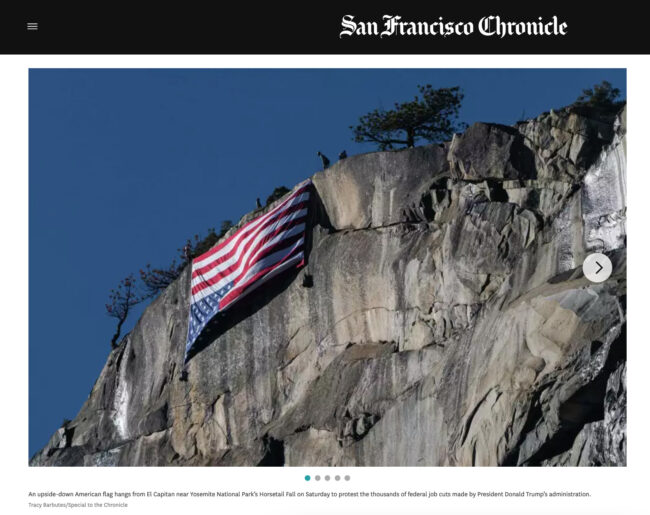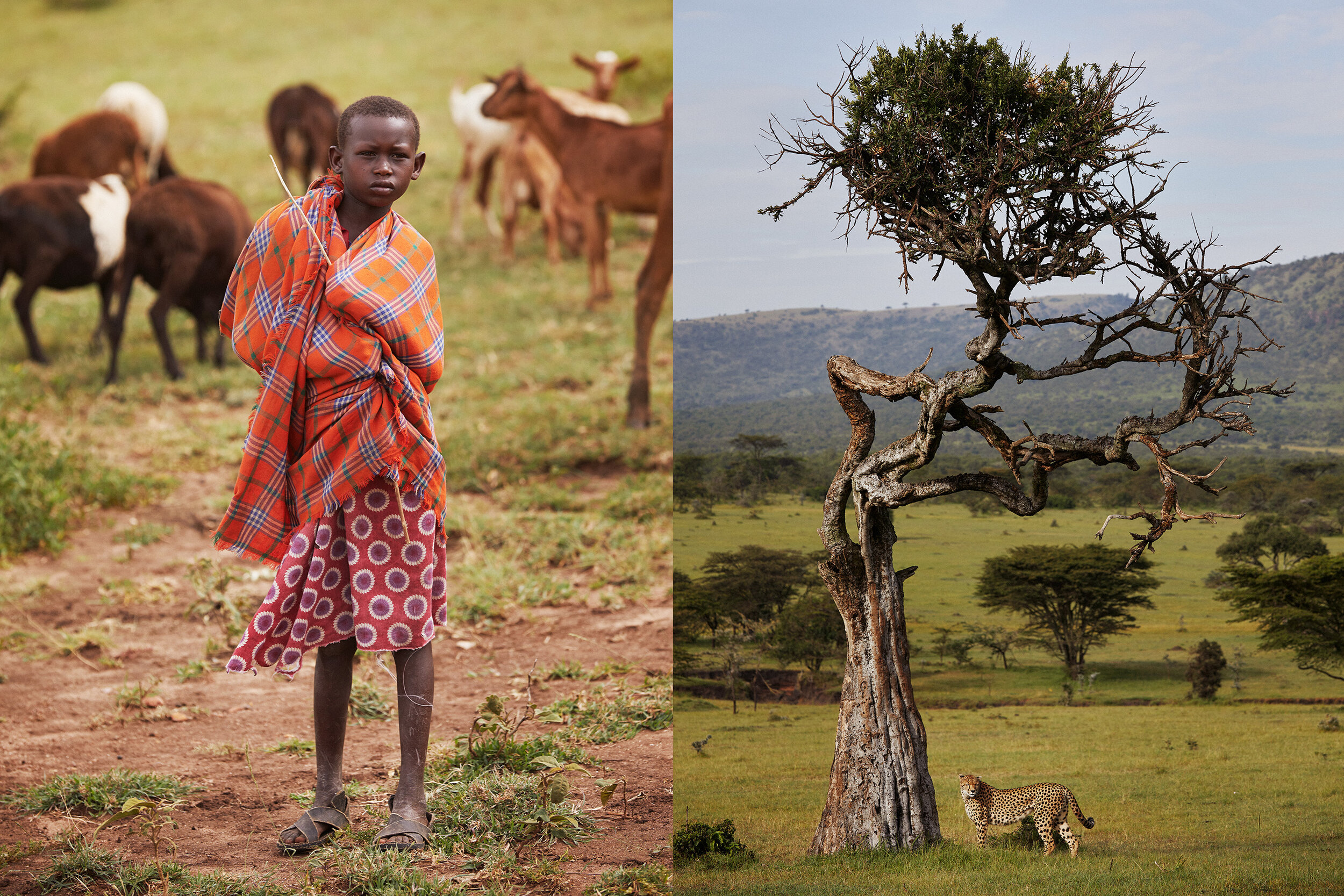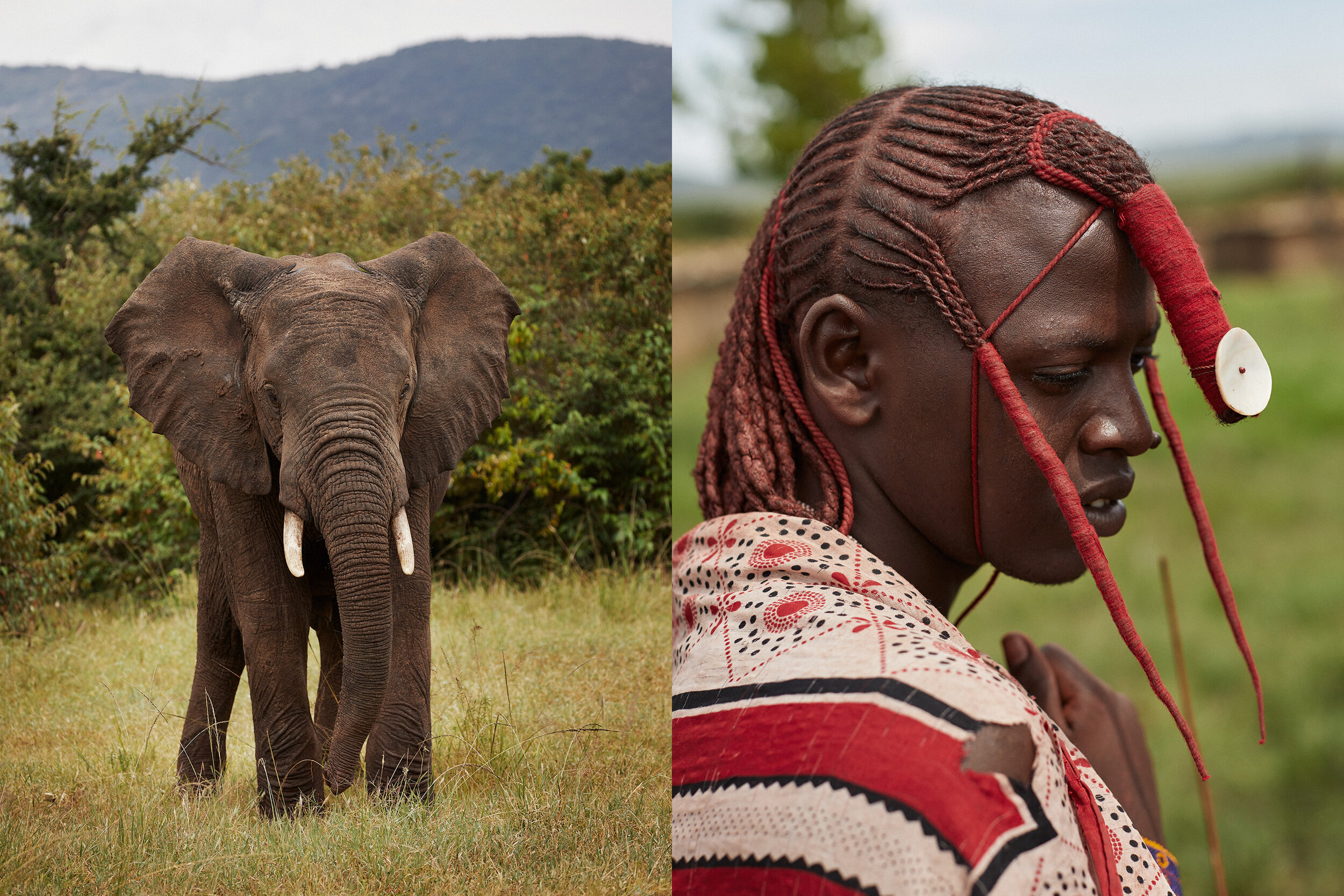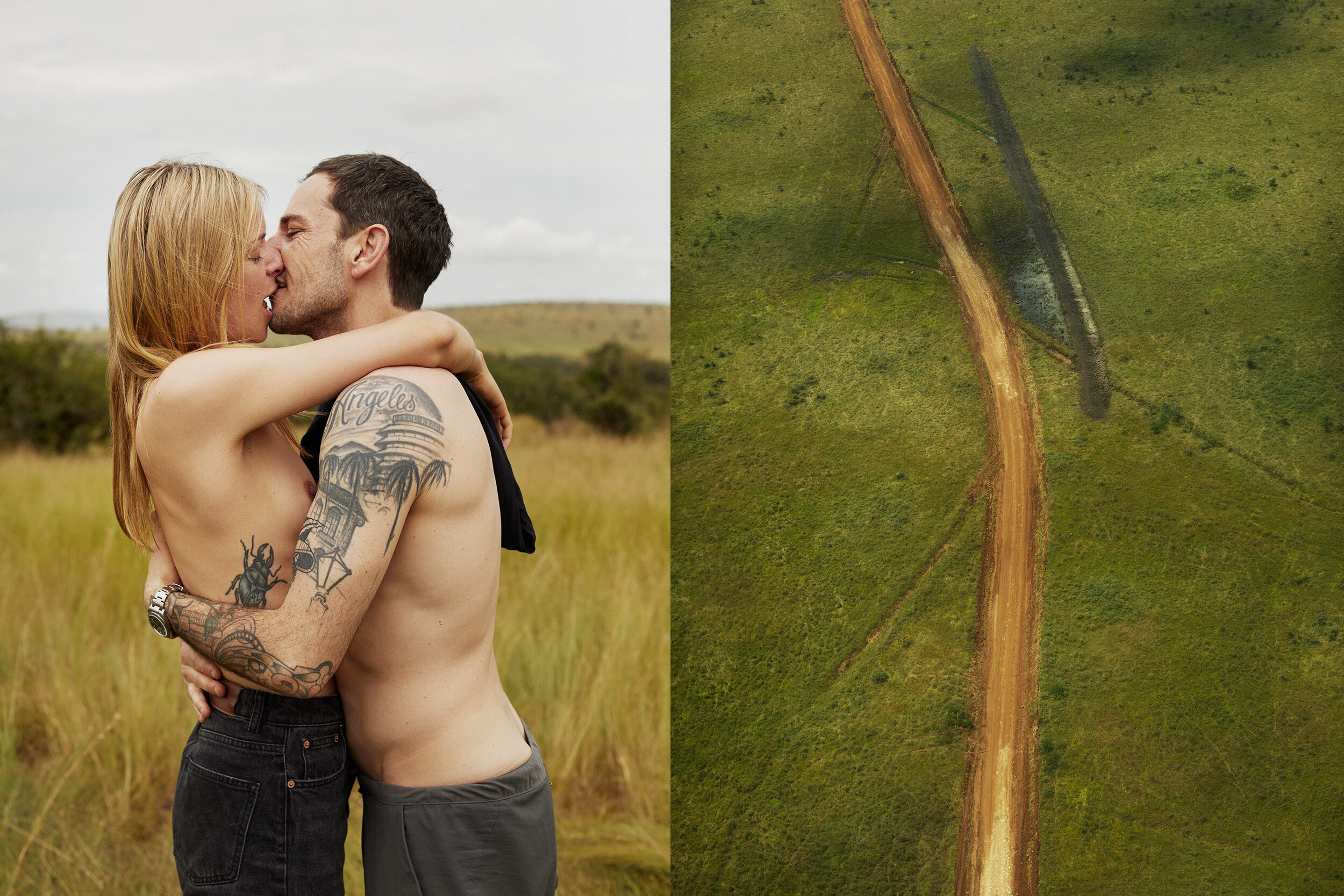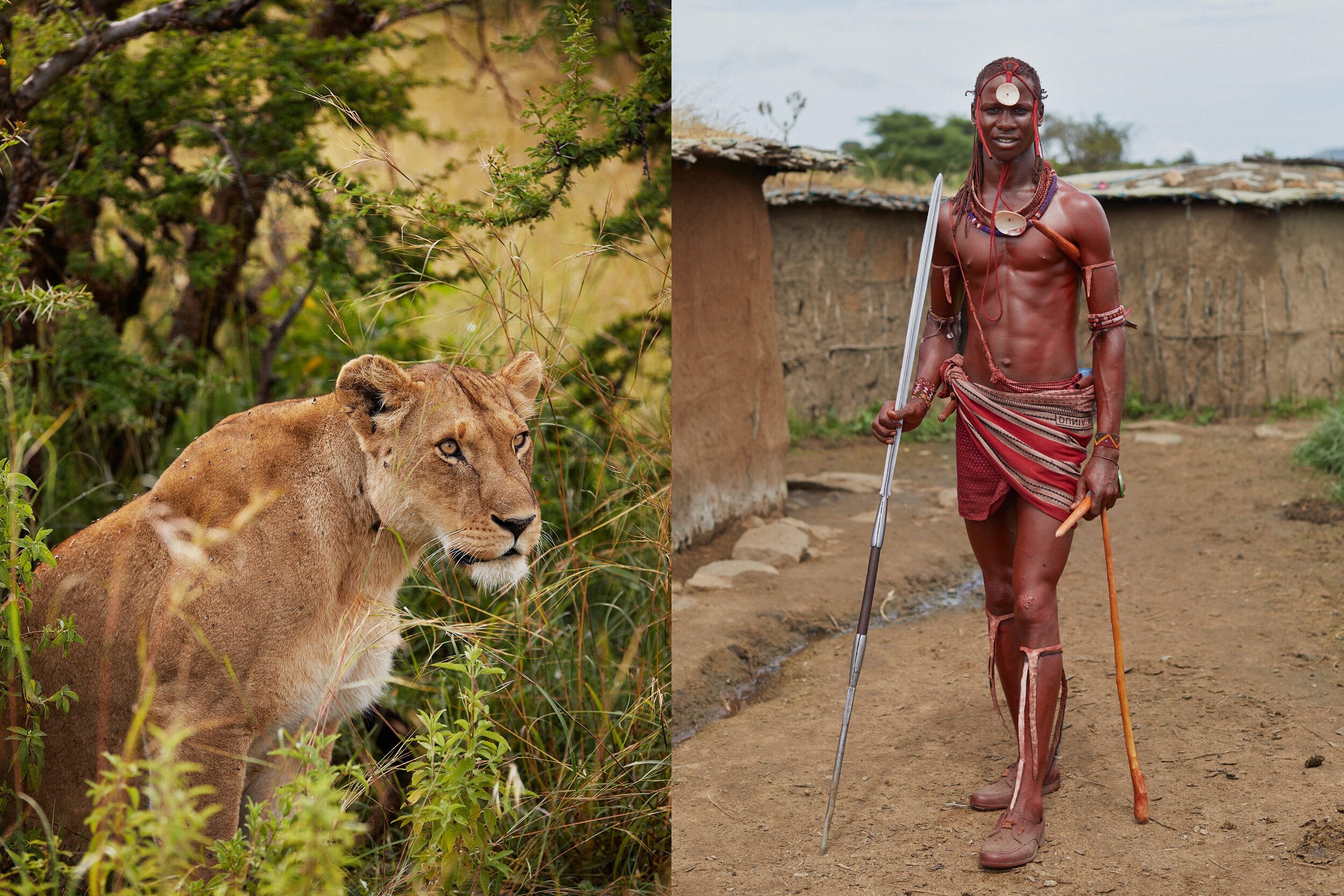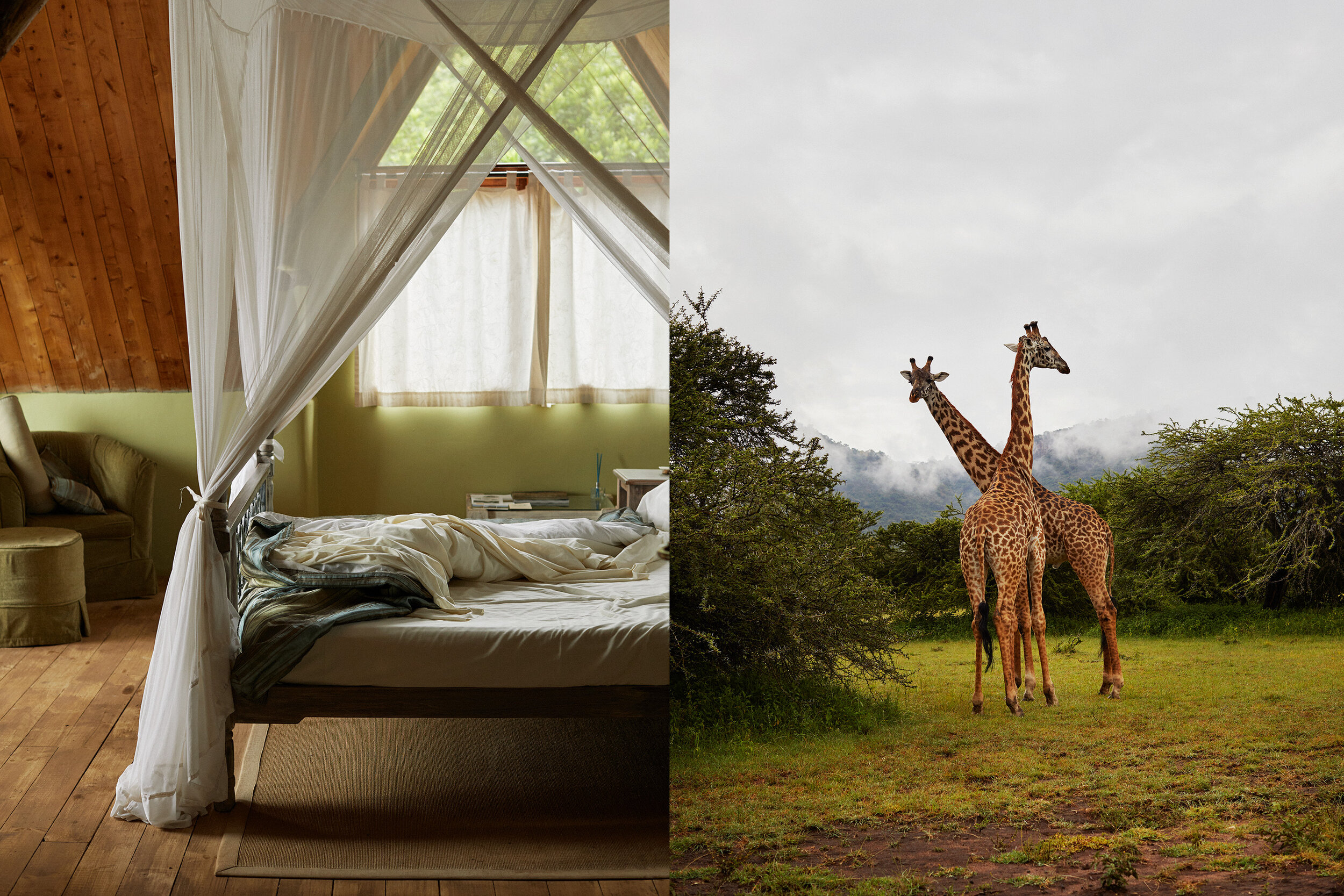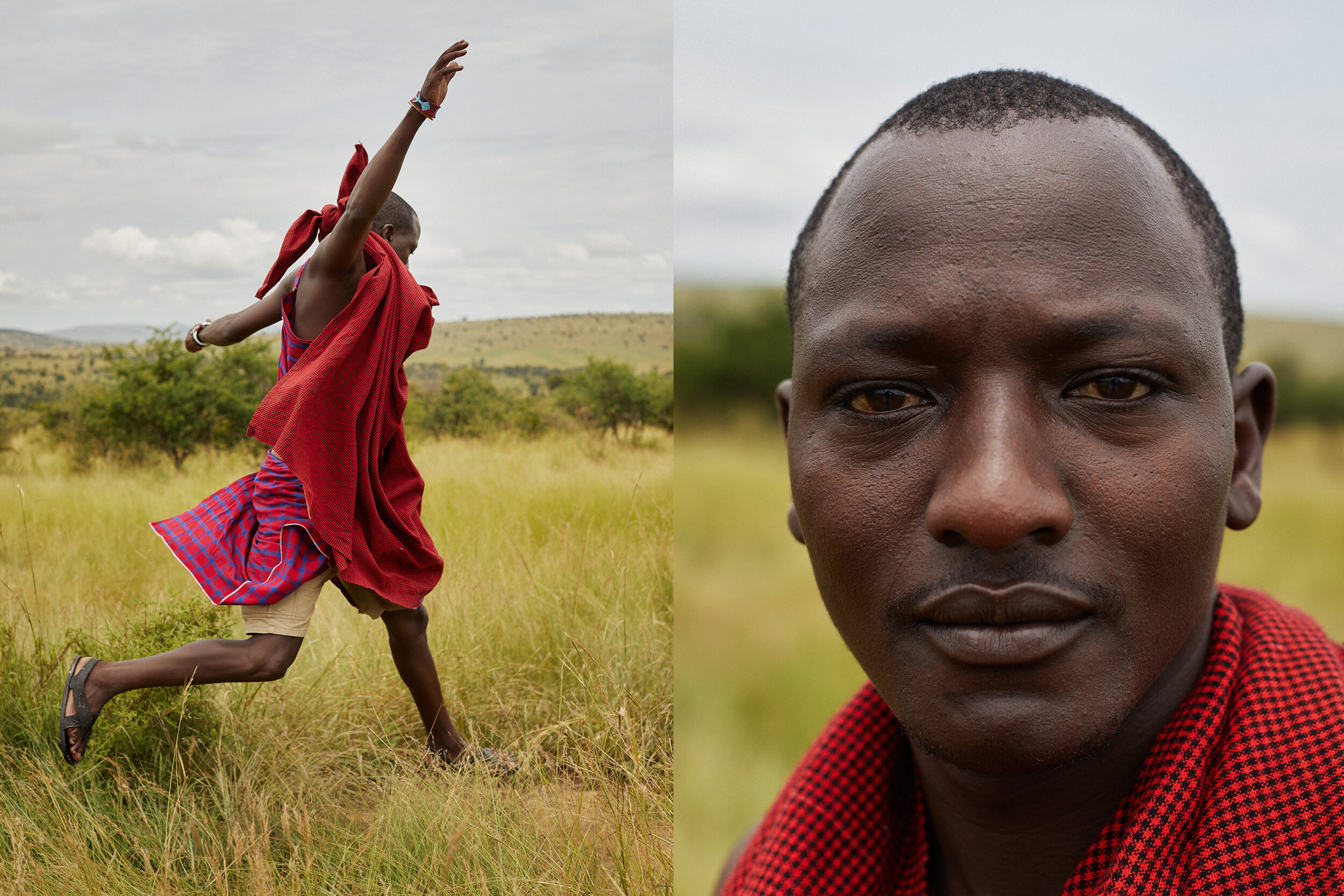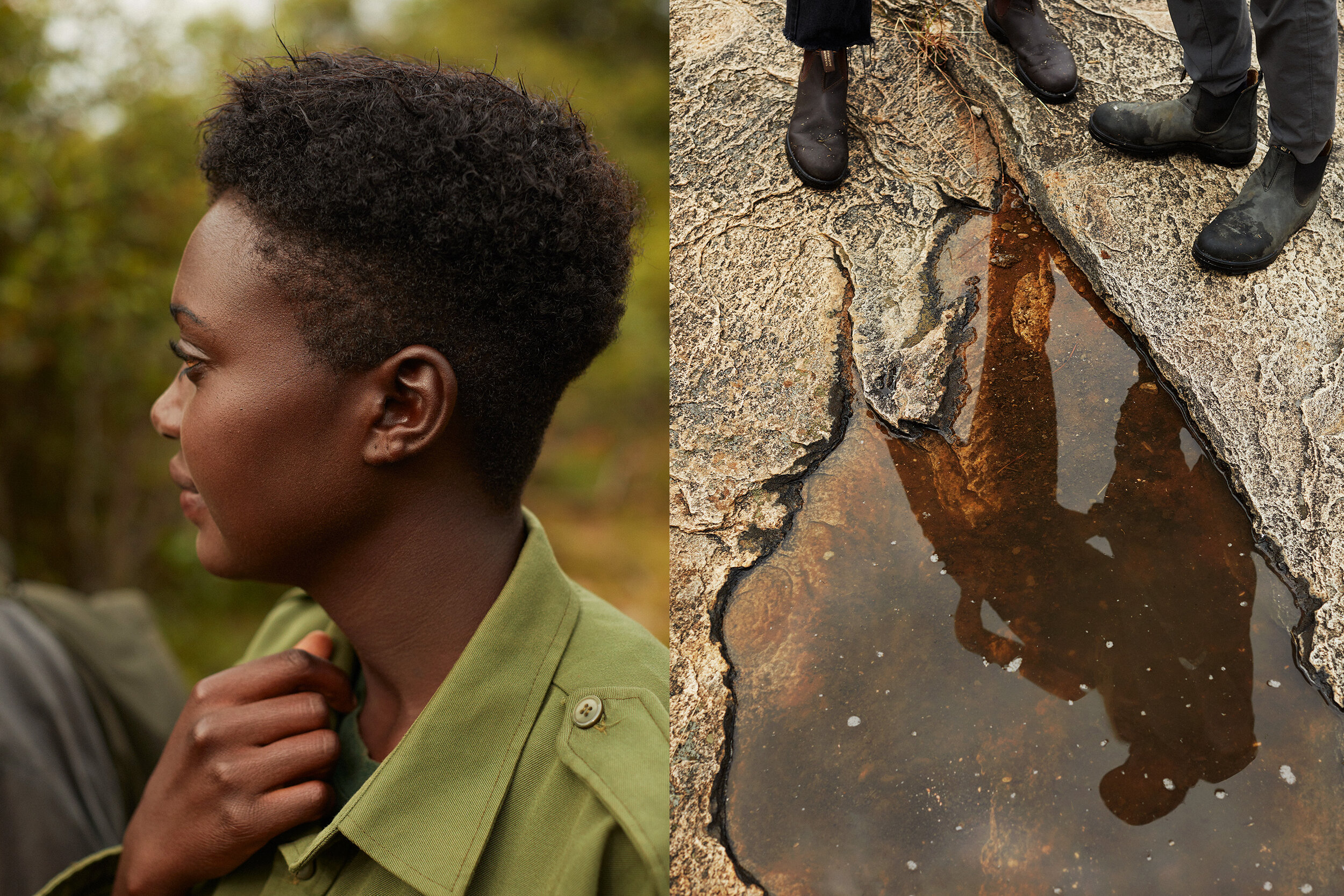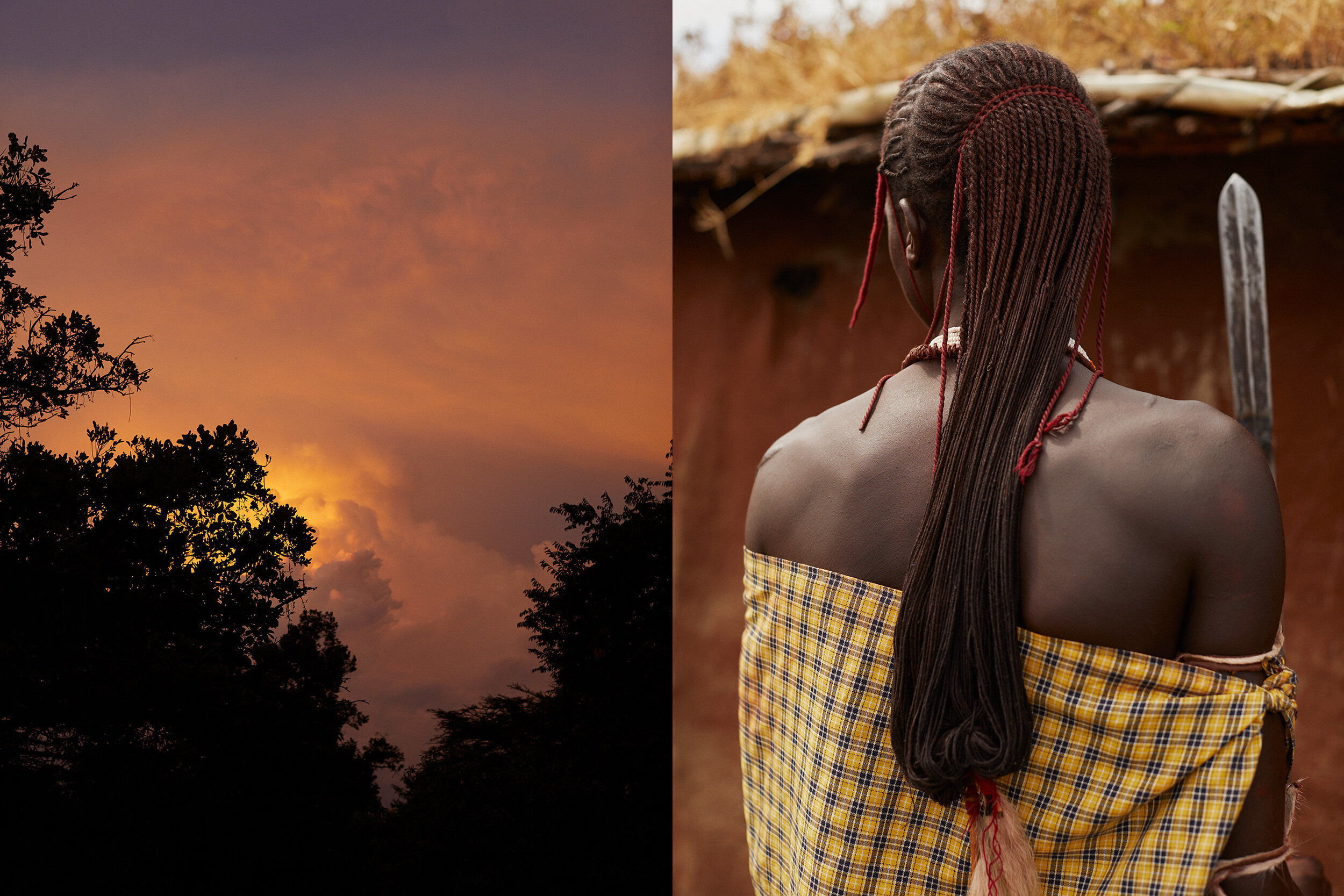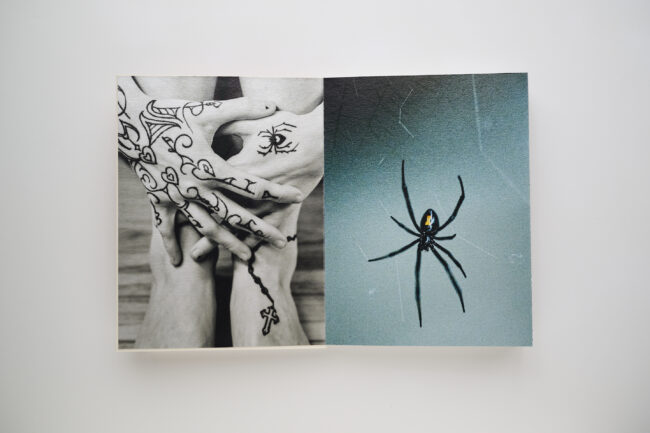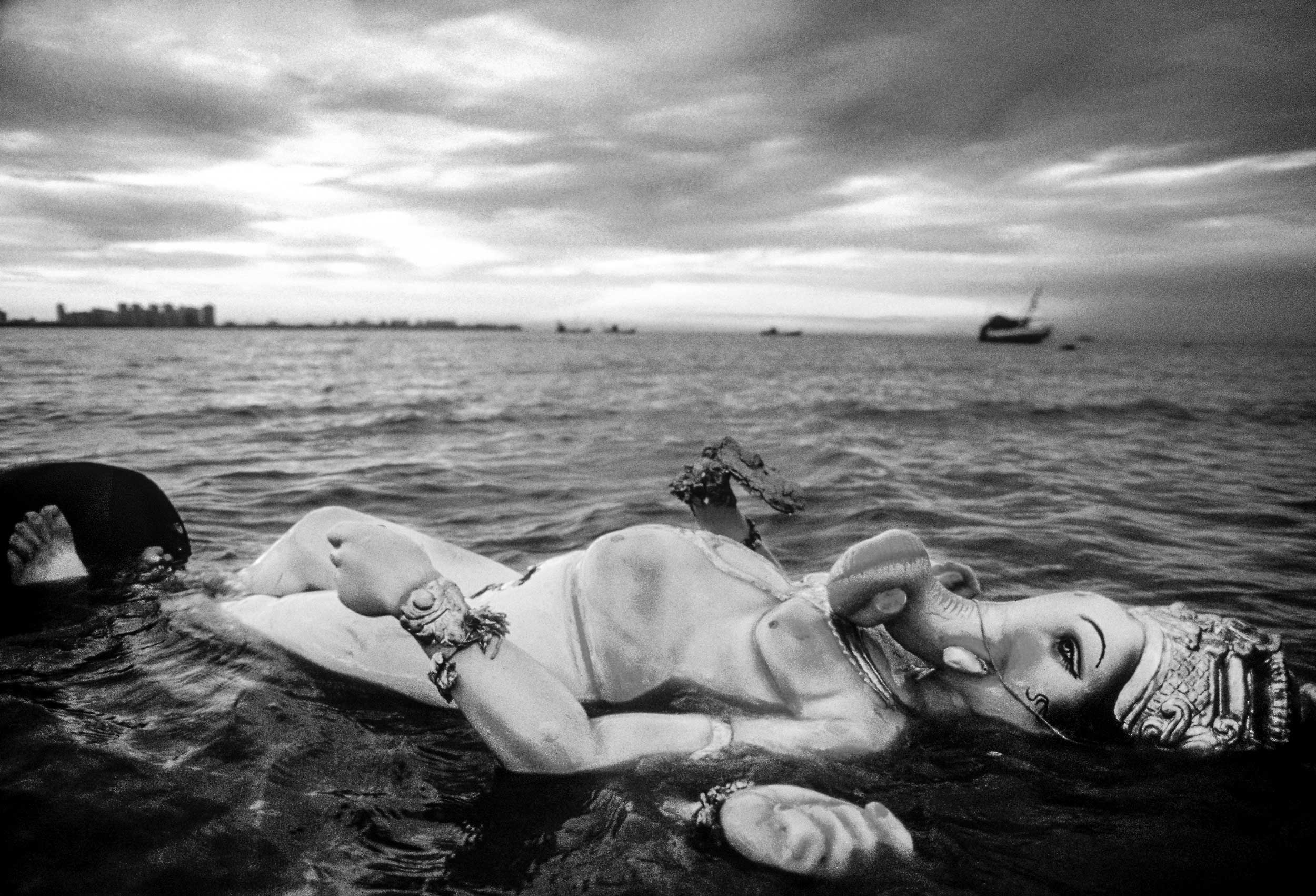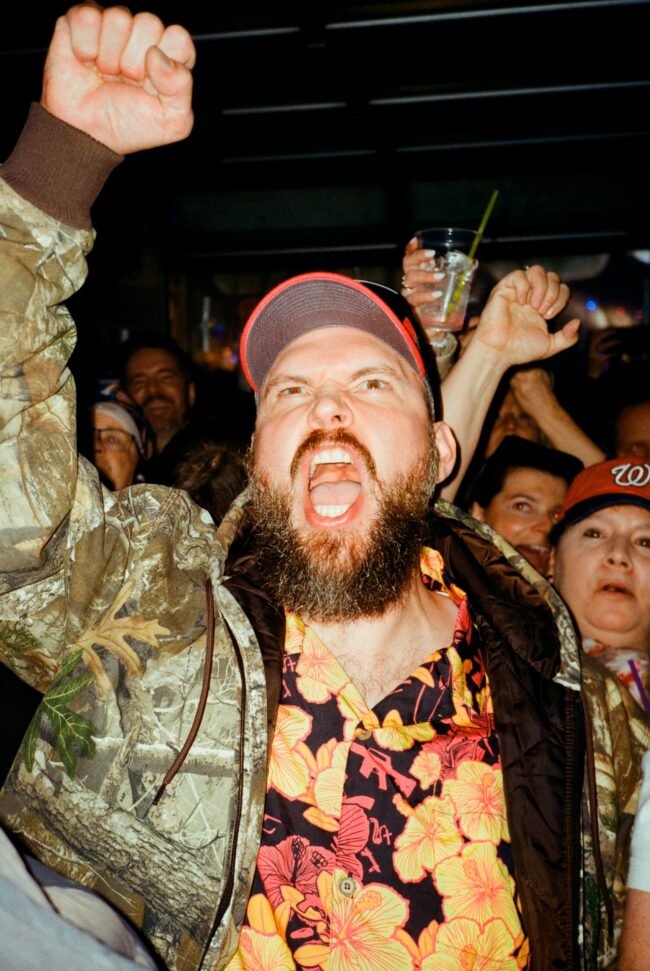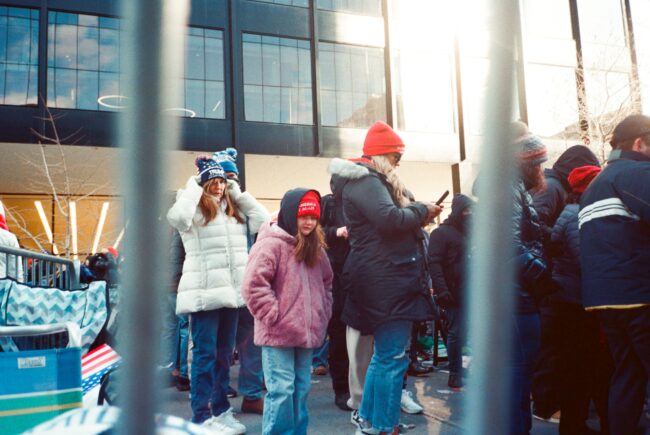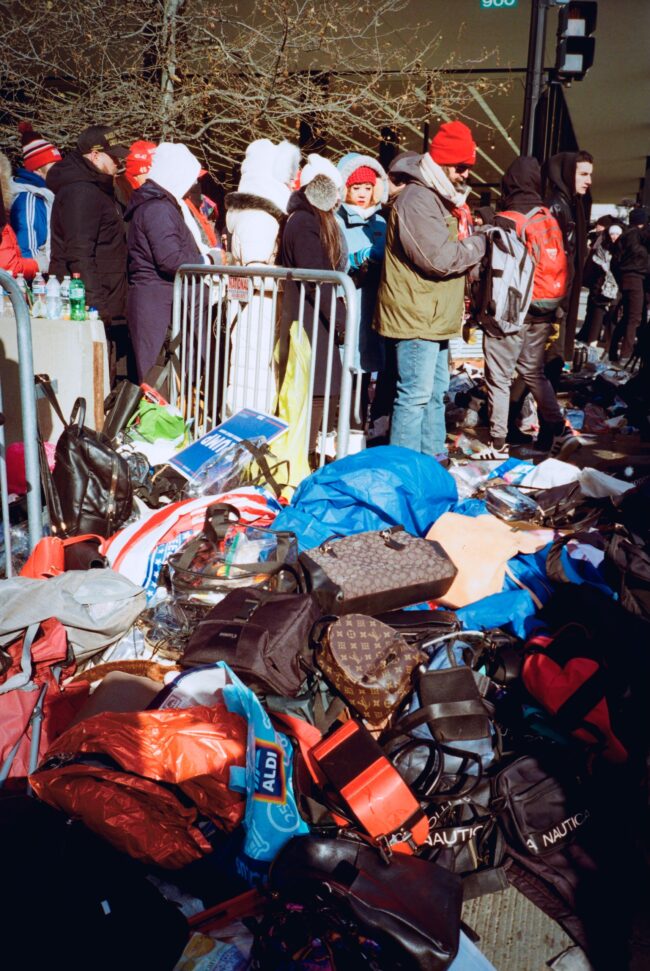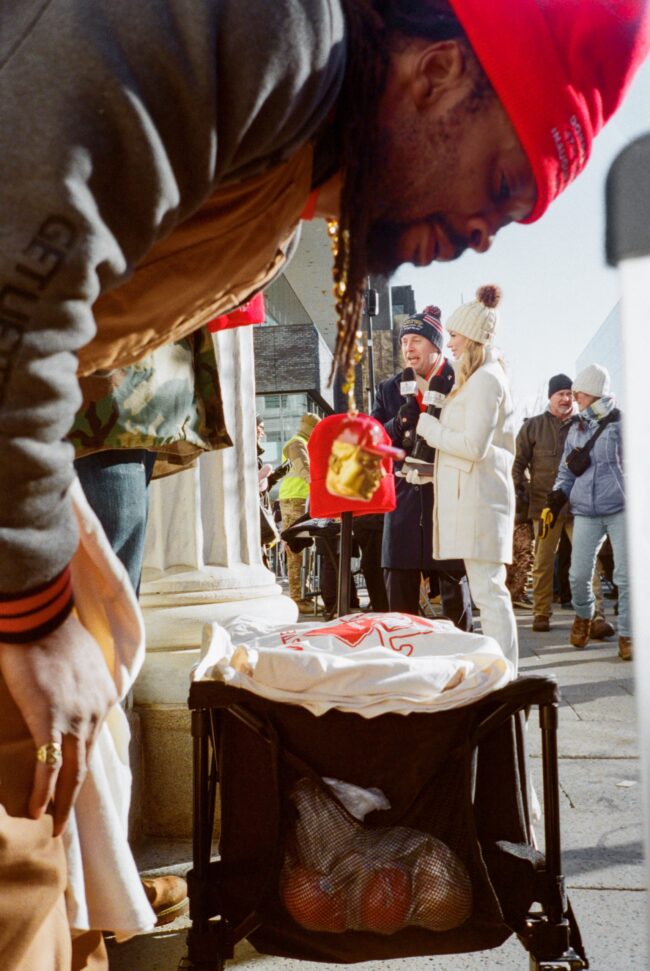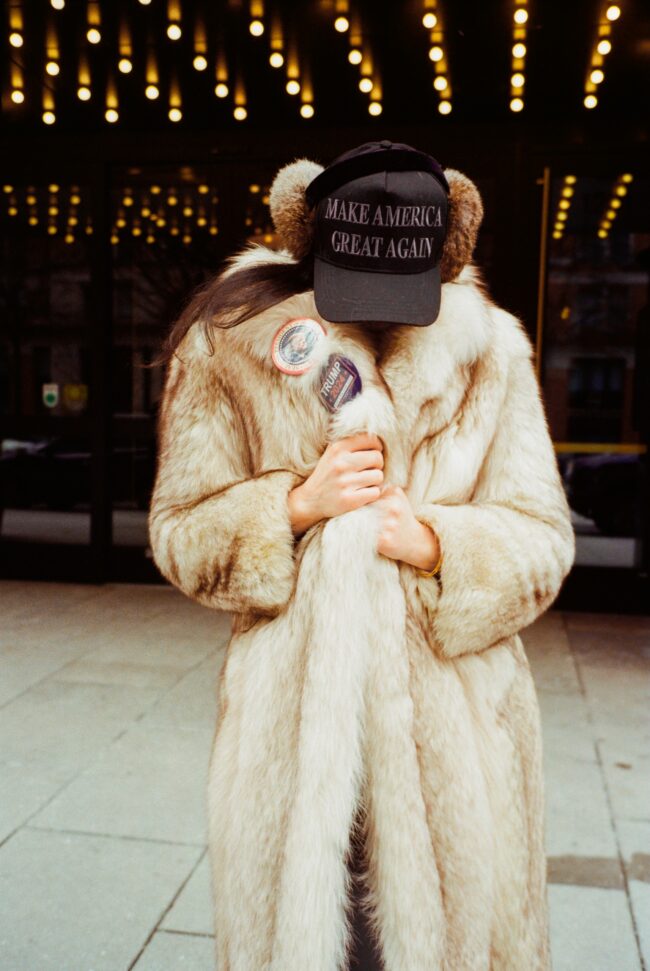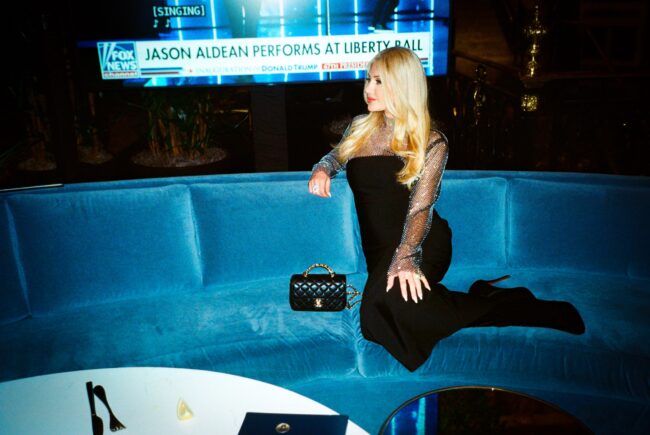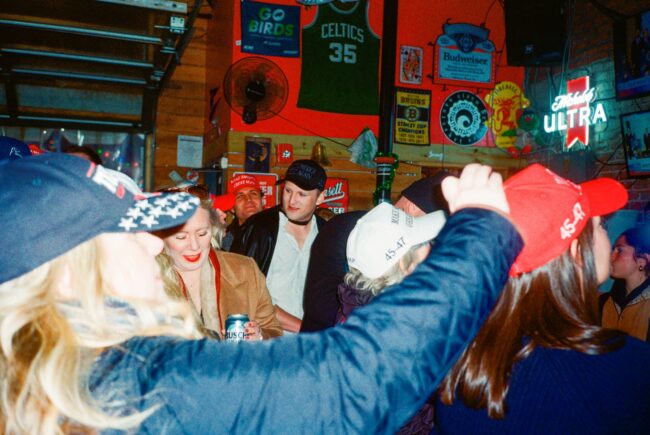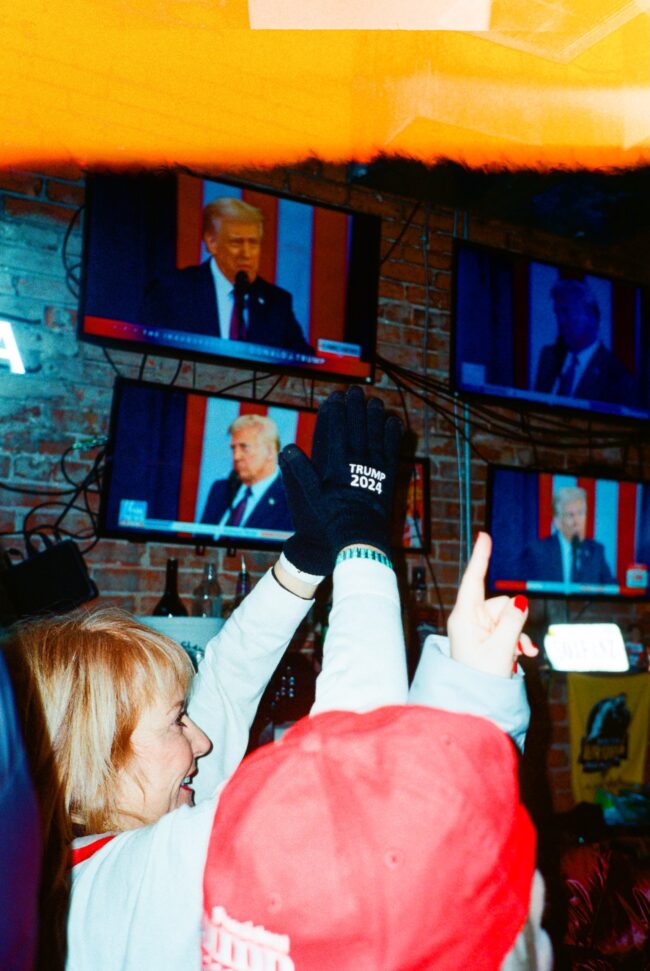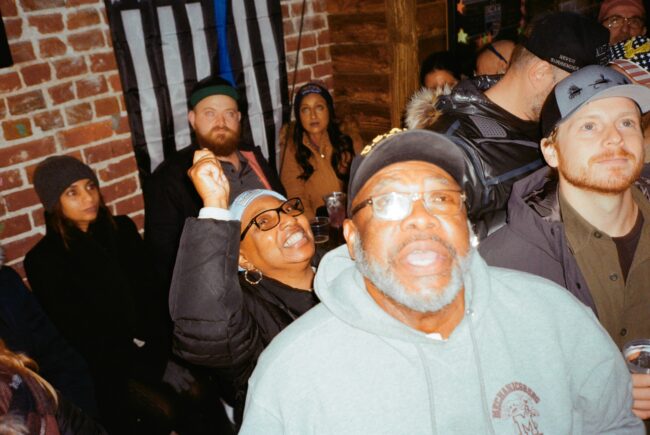Tracy Barbutes
Tracy: This was my first intimate experience with wildfire, as a photojournalist and as someone directly impacted by the fire. Our neighborhood was asked to evacuate, but I returned home each night to a smoky home, where I watched from my kitchen window as flames encroached into our community. I observed national and international media materialize into and out of our rural, gateway community, bringing with them certain ideas and prejudices, many of whom had almost no experience in a wildfire landscape. I witnessed fear and uncertainty in the region, especially in the early stages, which brought about a lot of mis- and dis-information. I listened to many Monday morning quarterbacks. With each new large fire, I cringe when I see similar behaviors. Here’s what I learned to be true – the firefighting personnel (firefighters, dozer drivers, sawyers, air attack, water tenders, incident commanders, etc.) – all share the common goal of wanting to protect people and property. All of this informs the work I generate with each new fire. At the time, the fire was the third largest in the state: it burned 400+ square miles. Given what the state has experienced since then, it now seems almost quaint.
How did the Public Information Officers impact your understanding of how to safely document fires?
I owe the Rim Fire PIOs a world of gratitude. I spent many days on the fire line with them, often 1-1, and they gave me the tools to walk confidently, knowledgeably into a wildfire. They also taught me about chain of command, and most importantly, they encouraged me to take the US Forest Service Basic 32 (it’s now called Basic 40). The following spring, I took the course, training with folks who went on to become firefighters. The course gave me an understanding of how fire burns in different conditions, as well as what it’s like to be on the ground as a firefighter. All of it, the PIOs, the courses – informed the work I create and how I create.
The Art of the Personal Project: Janelle Jones
The Art of the Personal Project is a crucial element to let potential buyers see how you think creatively on your own. I am drawn to personal projects that have an interesting vision or that show something I have never seen before. In this thread, I’ll include a link to each personal project with the artist statement so you can see more of the project. Please note: This thread is not affiliated with any company; I’m just featuring projects that I find. Please DO NOT send me your work. I do not take submissions.
Today’s featured artist: Janelle Jones
This personal project grew out of a desire to inject energy into my work, creatively and visually, and to explore the human form. I’ve focused on still life for most of my career and part of my interest in that is due to how careful and considered still life photography can be. It took me a long time to learn the technical skills of still life photography, but a longer time to figure out how a “Janelle Jones” still life photo should look, and once I did, I didn’t want to get stuck there. I wanted to push myself to be less cautious and to figure out how I could photograph new, less predictable subjects while keeping my own distinct visual sensibility.
I had also been wanting to photograph my sister, Lindsey Jones, a talented modern dancer who also lives in New York City. Watching a professional dancer like Lindsey at work, particularly in rehearsal or before the movement is polished and perfect, can be a truly revelatory moment about beauty and caliber of the human body. Dancers practice to be able to control their bodies’ most minute muscle movements. Lindsey’s movement is particularly impactful because of her long limbs and acute awareness of shape and space.
She’s also very energetic. So a collaboration between us seemed like the perfect way to inject energy into my work, and challenge myself on how to light and represent the human body and movement.
Lindsey and I also share a visual sensibility, and we have both long loved the work of Norman McLaren, a Scottish Canadian animator whose short animations are bold, colorful, and often hypnotically repetitive. McLaren’s Canon (1964) and Pas de Deux (1968) are both studies in motion and play on manipulation of time and space. Those two animation pieces inspired the decision to use in-camera multiple exposure and motion blur to play with how we translated dance, a medium dependent on time and space, into a single-frame photograph. Lindsey’s clothing in the photographs was also influenced by the eye-popping colors of McLaren’s works.
This project was a true experiment and collaboration between photographer and subject. It’s an exploration I hope to continue finding fresh ways to challenge myself, collaborating with other artists, and bringing new ideas into my work while staying rooted in the precision and intentionality that have always defined my photography.
To see more of this project, click here
APE contributor Suzanne Sease currently works as a consultant for photographers and illustrators around the world. She has been involved in the photography and illustration advertising and in-house corporate industry for decades. After establishing the art-buying department at The Martin Agency, then working for Kaplan-Thaler, Capital One, Best Buy and numerous smaller agencies and companies, she decided to be a consultant in 1999. Follow her on Instagram
Pricing & Negotiating: Business Owner Portraits For A Beverage Brand
By Craig Oppenheimer, Wonderful Machine
Each month, we explain a recent cost estimate, contract, or purchase order in the form of a Pricing & Negotiating article. By redacting the names of the photographer and the client, we can share useful information that would otherwise be confidential. You can read more about our Pricing & Negotiating services on the Consulting Services page of our website.
Concept: Portraits of business owners, and images of them interacting with products at a manufacturing facility
Licensing: Unlimited use of up to 30 images for five years from first use
Photographer: Portraiture specialist
Client: Beverage brand
Summary
I recently helped a portrait photographer create an estimate and negotiate a project for a beverage brand. The client was launching a new product within a larger portfolio of beverage companies and wanted to capture portraits of business owners interacting with their products at a manufacturing facility. The images would help tell the story of the product’s origins and the people behind it.
The shoot took place over a single day and focused on five main setups with variations on the same themes. The photographer and crew worked to capture 30 final images. Although the client initially requested unlimited use across all media, based on the creative brief and our discussions, the images were primarily intended for use on their website and social media. While they were not willing to restrict media use, we did convince them to limit the duration of use to five years.
Fees
Traditionally, photographers in this market have undervalued usage, and local clients, such as this one, were accustomed to more conservative rates compared to other major markets. I priced each of the five main setups at $1,500, totaling $7,500, and added a creative fee of $2,500, bringing the total fee to $10,000.
Crew
We kept the crew lean, including a first assistant for both the scout and shoot days and a Digitech for the shoot day, all at rates appropriate for this market.
Styling
After a call with the agency, they asked that we include light prop styling in our bid, with a dictated prop budget of $750. We factored in a prop stylist for both prep and return time, in addition to the shoot day, and detailed the prop budget as instructed, while noting that the final amount would depend on the creative direction. We also added a hair and makeup stylist and noted in the “client provisions” section at the top of the estimate that the client would be handling their own wardrobe.
Equipment
We allocated $1,000 for the rental of the photographer’s own gear as part of the production.
Misc.
We allocated $750 to cover mileage, parking, meals, and any other unforeseen expenses on the shoot day.
Post-Production
We allocated a few hundred dollars for the photographer’s time to create a web gallery for the client and set a rate of $100 per image for retouching, allowing up to one hour per image for each of the 30 images they would select.
Feedback
The estimate was received well, but they asked if we’d be willing to reconsider the time limitation and grant perpetual usage. I suggested that we at least double the photographer’s fee, but we ultimately included an extra $5,000, bringing the total creative/licensing fee to $15,000. While I would have preferred a higher fee, I think the shelf life of these images would likely have been around three years.
Results
The photographer was awarded the project.
Follow our Consultants @wonderful_at_work.
The Art of the Personal Project: Patrick Fraser
The Art of the Personal Project is a crucial element to let potential buyers see how you think creatively on your own. I am drawn to personal projects that have an interesting vision or that show something I have never seen before. In this thread, I’ll include a link to each personal project with the artist statement so you can see more of the project. Please note: This thread is not affiliated with any company; I’m just featuring projects that I find. Please DO NOT send me your work. I do not take submissions.
Today’s featured artist: Patrick Fraser
My friend Phoebe called me and said would I like to come and take pictures in Kenya. She was co-guiding a group
that would be exploring biodiversity in a stunning part of East Africa. We would be based on a nature conservancy in the greater Serengeti surrounded by the cultural heritage of the Masai people.
As I had never explored Kenya I jumped on a plane to Nairobi.
While I was there, I took pictures which told the story of the group who were traveling which they could use for their personal use.
I did however manage to capture a personal series of images which I thought would pair together well. We often were with local Masai people and in the village, we would run into nomadic tribes who were passing through.
Once I edited my series I mixed local people, landscape animals and some off the western travelers. I saw similarities with us humans and the wild animals. The costume of the tribal people was particularly vibrant against the greens of the Mara.
Since returning I read the Peter Beard bio “Wild” which laid out his wild life and his love for Kenya. I definitely would like to return there, hopefully with my family sometime as the land and the animals are truly unforgettable.
To see more of this project, click here
APE contributor Suzanne Sease currently works as a consultant for photographers and illustrators around the world. She has been involved in the photography and illustration advertising and in-house corporate industry for decades. After establishing the art-buying department at The Martin Agency, then working for Kaplan-Thaler, Capital One, Best Buy and numerous smaller agencies and companies, she decided to be a consultant in 1999. Follow her on Instagram
Pricing & Negotiating: Brand Narrative, Lifestyle, And Product Photography For A Large Clothing Brand
By Bryan Sheffield, Wonderful Machine
Each month, we explain a recent cost estimate, contract, or purchase order in the form of a Pricing & Negotiating article. By redacting the names of the photographer and the client, we can share useful information that would otherwise be confidential. You can read more about our Pricing & Negotiating services on the Consulting Services page of our website.
Concept: Photos of Olympic-hopeful athletes modeling the client’s clothes at a university sports facility.
Licensing: Unlimited use (excluding Broadcast) of up to 10 images for 6 months, and Web Collateral & Web Advertising use of up to 65 images for 6 months.
Photographer: Brand Narrative, Lifestyle, and Sports/Fitness Specialist
Client: Large clothing brand with over 200 retail locations.
Summary
I recently helped a photographer build an estimate and negotiate a project for a client developing a campaign tied to the 2024 Olympics. Ultimately, the photographer nailed the creative, and the client licensed additional images.
The project involved a single-day photo shoot at a university athletic facility in a major US city. The shoot centered on four athletes, each modeling and using the client’s athletic products within their respective sports disciplines. This shoot was conducted simultaneously with video production, each team having separate creative objectives and crews.
The initial deliverables included a series of images that captured the athletes using the brand’s apparel. Most of the photos were intended primarily for use on the client’s website and social media feeds, with some images for print and web advertising, in-store displays, and potential OOH advertising.
The client was responsible for providing all production support, products, styling, locations, coordination, talent, and talent management. They also handled all insurance, payroll, and image retouching.
Fees
It’s worth noting that this RFQ came to the photographer less than a week before the anticipated shoot date. We learned that the client had been working with another photographer, but they were not moving forward and needed a replacement quickly. The photographer and I were on the same page that their availability and attention to the last-minute project would put upward pressure on the fees.
Considering the client, creative brief, shot list, the photographer’s past work with this client, and the intended uses, I estimated $19,750 would be on the higher end of what the client might expect for a one-day shoot. However, we felt the total fees were fair, especially considering the cost breakdown: $1,000 per image for the 6-month unlimited use and $150 per image for web collateral and web advertising. We made sure the client understood the per-image pricing during the bidding process, which helped later on when additional licensing requests came up (jump to the bottom to see the final invoice).
Also, we added one pre-production day at $1,000 to cover creative meetings, planning, and crew booking. We added a tech scout at $1,200, along with $750 for a single travel day home, since the first travel day overlapped with the tech scout.
Crew
We included a First Assistant at $1,000/day for the Tech Scout and Shoot days, along with a Second Assistant to manage lighting and camera equipment on the shoot day. The client asked us to exclude a Digital Tech in the estimate, which seemed a bit unusual given the scale of the shoot, but the photographer was okay with it. The client also requested two Production Assistant swings (crew that would work for both the photography and video productions) for the shoot day to help streamline the still and video shoots and save money. Initially, I pushed back on including shared crew, concerned it would inflate the stills estimate with unnecessary items for the photographer and lower the video estimate, which we couldn’t control. However, the client insisted on including these line items while noting our concerns about inflating the bottom line.
Equipment
We included $3,000 for cameras, lenses, lighting, and grip rentals. While the photographer planned to use their own cameras and lenses, they intended to rent lighting, C-stands, sandbags, and other gear from a local rental house. We also added $450 per day for the photographer’s personal digital workstation, which includes their laptop and other peripherals. Lastly, we allocated $320 for three hard drives, one of which the client would keep.
Travel
The client would book and pay for the airfare and lodging directly. We included the photographer’s out-of-pocket travel costs such as baggage fees, airport transfers, and per diems.
Miscellaneous
The client asked us to exclude insurance since they would take care of it. Having encountered this with them on previous projects, we included a note clarifying that they would provide insurance for the production to eliminate any ambiguity.
Post-Production
We added $500 for the photographer to do a First Edit for Client Review, delivered as a web gallery. We also included estimated costs for the photographer to handle light cleanup and color work on the 75 requested images at $150/hour. The client had initially requested that they would handle all retouching themselves internally.
Results
The photographer was awarded the project the same day the estimate was delivered! The shoot was a huge success, with perfect weather, awesome talent, and a thrilled client. It was a great day filled with lots of smiles.
Additional Licensing
After reviewing the photography, the client loved the work and requested an additional 37 images. They wanted 15 images for web collateral and web advertising use, and another 22 for the retailer’s catalog and web advertising. The client also requested that the photographer do some light retouching on the images. We invoiced an extra $2,250 for 6 months of use for the 15 web collateral and web advertising images ($150 per image), and $4,950 for 6 months of use for the 22 collateral (including client catalog) and web advertising images, at a rate of $225 an image.
The final invoice included a Creative/Licensing fee of $26,950, plus an additional $5,587.50 for the post-processing/light retouching.
Follow our Consultants @wonderful_at_work.
The Daily Edit – Gate44 Artist in Residency : Colin Sussingham
Graphic Design / Art Direction: Elle Rotstein
Photographer: Colin Sussingham
Heidi: Was the desire to make something tangible born from getting away from the computer, screens, and behind a lens?
Colin: I’d say the goal generally for my personal work always has that in mind. Making something physical, whether it’s a book, zine, poster or just prints is really important to me. As a society we’re obviously fed way too much imagery through social media, streaming and advertisements, so making something that is tactile and can give the viewer a moment to pause and actually hold printed work is something special and meaningful to me.
In this age of digital overload, what suggestions do you have for those who want to get started making something physical?
My advice would be just go for it and don’t be afraid to experiment or mess up. I’ve been making zines since 2009 and to this day I still make some on a shitty laser printer at my house, and I still mess up my sequencing and flipping pages incorrectly when trying to print front and back. It’s all part of the fun and the process for me. There’s a ton of websites that offer affordable and high quality zine printing and many helpful tutorials on how to lay out artwork for print. Or if you have any friends that work corporate jobs you might be able to get them print some off for you at work. I did that for years.
How much did the cultural immersion of being in Milan for the Gate 44 residency inform the work?
Milan as a city didn’t play much of a role. All the photographs were made prior to us arriving in Milan, and my wife, who attended the residency with me, had completed 75% of the layout prior to us arriving as well. We treated the residency like a full-time job, so we mainly got to explore the city in the evenings and on the weekends.
What was the creative intent of the book Constructive Interference?
This will be a long answer because there were multiple steps that brought us to the book concept and title. Originally we didn’t have a fully thought out idea. I took 100s of photos based off of Elle’s creative direction and my personal inspirations and then she sat with everything and made connections between the new images and many from my archive. Since she’s also an artist that mostly works in analog, we both collaborated on altering my digital works through collage and painting and then retaking photos of the new pieces to bring them back into the digital world. The concept grew organically from Elle’s layout where she was making physical connections between my photos, one image would bleed into the other through the seam. While we were at the residency we didn’t have a title but we knew we wanted to express how human beings and nature are intertwined if you just pay attention. While we were brainstorming titles I started researching water ripples since we had a few images in our layout. The term “constructive interference” refers to when two waves or pulses (whether it’s water, light, sound) align in sync and create a wave of greater magnitude than it’s original parts. We felt that it was a perfect title and metaphor for the book for many reasons. First, we were making connections between images that felt stronger once paired together, second, we were actually interfering with the images through our collaboration, physical touch, and all the printing methods. Lastly, the fluidity of the accordion binding and the silkscreened water pattern connected back to the water ripples that lead us to the title.
Are these pairings commentary on biomimicry?
Biomimicry definitely comes into play. A lot of the work I’ve been shooting over the past few years has related to that theme in some way. Not only how we as humans copy what we see in nature, but finding moments within nature that relate to each other. Finding connections and also moments of contrast. There were some pairings that came from happy accidents and some that were much more intentional. A lot of it is to the credit of Elle’s art direction though. She spent a lot of time composing the layout
How did this idea evolve, and were you and your partner involved in the program?
We were invited to do the residency in March of 2024. Our time slot was going to be the first two weeks of September that year, so we started working on the project pretty much immediately after we found out.
My wife is an artist and we collaborate often on projects, she did the art direction and design/layout of the book. We hand-printed it with two print/book binding technicians from the residency.
Was this more of a book-making process and photography sequencing experience?
Yes, our intention was to create something special between the two of us, and different from what we both typically create as artists. Both Elle and I have printmaking experience from our college days, but this was a totally new direction for me in terms of creating an art object. I’ve been combining analogue techniques with my photos for many years now, but I had never thought about hand binding my work. This experience definitely opened my eyes to another level of photography and presentation that I would like to continue to explore. In terms of the concept and photography sequencing, it was very fluid and experimental. We didn’t have a concept at the start, we just gathered inspiration and let the idea behind the book unfold naturally.
This looks like 4 accordion signatures, hand-bound with a belly band – were all these new techniques for you?
Yes these were new techniques for us. One of the technicians at the residency is focused solely on book binding, so she was there to walk us through the process and bind the book while we worked on printing and the design.
If the book is open end to end, it’s about 18 feet or more. We printed on two different kinds of paper, so the pages had to be glued page to page with an overlap at certain points.
Tell us about the overlap.
They had to overlap because the book is made up of two different kinds of paper. Due to that we couldn’t print in one continuous sheet. We printed on a paper with a metallic sheen and some that were more matte. So there were spreads where those two papers met and therefore had to be glued together on their backsides.Elle’s art practice involves drawing with graphite and black ink, and she felt strongly about using a paper that could create that same metallic shine effect as another nod to combining our two art practices. Once printed I also felt it added a level of depth that the book wouldn’t have had if we printed the whole thing on one kind of white paper. We individually silkscreened the back of each page with an inverted water texture from the book.
Can you describe a typical day in the Gate 44 program?
There’s an apartment at the residency so you’re staying right next to the studio. We would normally start working around 9am, break for lunch, (Italian work lunches are apparently around 1.5 to 2 hours, which we loved) fresh pasta from a small family run spot that everyone who works at the residency goes to. Of course finish with a coffee or tiramisu before going back to work until 6pm. Then we’d explore the city, have dinner or meet up with friends at a bar, sleep and repeat.
Assume all the photography was collected before the project and then the body of work took shape while there?
All the photographs were taken before, the majority of the design and layout as well. The first week was mostly experimentation and troubleshooting with a variety of media and printing methods (collage,silkscreen,relief printing,painting,burning). The second week was focused mostly on printing and binding. We made an edition of 4 books.
What are you working on now?
I’m working on publishing a new personal photo book that I’ve been shooting since 2020. In the process of reaching out to publishers currently.
The Art of the Personal Project: Karan Kapoor
The Art of the Personal Project is a crucial element to let potential buyers see how you think creatively on your own. I am drawn to personal projects that have an interesting vision or that show something I have never seen before. In this thread, I’ll include a link to each personal project with the artist statement so you can see more of the project. Please note: This thread is not affiliated with any company; I’m just featuring projects that I find. Please DO NOT send me your work. I do not take submissions.
Today’s featured artist: Karan Kapoor
Ganpati Immersion: My First Project
This series holds profound significance for me—marking both my return to Mumbai, the city of my birth, after years at boarding school in England, and my debut as a photographer. Through the lens of the Ganpati festival, I sought to reconnect with the city’s energy, its traditions, and its soul.
The festival culminates in a moving ritual: the immersion of Lord Ganesh idols into the ocean, symbolizing renewal and impermanence. With a pair of Nikon FM cameras loaded with Kodak Tri-X 400 film, I ventured into the vibrant chaos and quiet beauty of the celebrations the morning after… At the time, Tri-X film was hard to come by in Mumbai, and I had only 3-4 rolls for the entire project. Every frame mattered, and each shot demanded intention and precision—a limitation that shaped my approach to storytelling.
One defining moment came when one of my cameras slipped into the sea—a loss that mirrored the themes of the festival itself. Fortunately, the camera was repaired, reflecting the spirit of resilience and restoration that characterized those times and became an ethos for my creative practice.
Shooting in black-and-white with Tri-X film allowed me to focus on texture, contrast, and emotion, stripping the visuals down to their essence. Each photograph captures not only the event but the layers within it—the intricate artistry of the idols, the shimmering water, and the heartfelt devotion of the people.
This project was a deeply personal journey. Returning to Mumbai after my time in England gave me a fresh perspective, allowing me to see the familiar through new eyes. Documenting the Ganpati festival reaffirmed my belief in the power of photography to preserve fleeting moments, honor traditions, and reveal the extraordinary within the ordinary.
To see more of this project, click here
APE contributor Suzanne Sease currently works as a consultant for photographers and illustrators around the world. She has been involved in the photography and illustration advertising and in-house corporate industry for decades. After establishing the art-buying department at The Martin Agency, then working for Kaplan-Thaler, Capital One, Best Buy and numerous smaller agencies and companies, she decided to be a consultant in 1999. Follow her on Instagram
The Art of the Personal Project: Fulvio Bonavia
The Art of the Personal Project is a crucial element to let potential buyers see how you think creatively on your own. I am drawn to personal projects that have an interesting vision or that show something I have never seen before. In this thread, I’ll include a link to each personal project with the artist statement so you can see more of the project. Please note: This thread is not affiliated with any company; I’m just featuring projects that I find. Please DO NOT send me your work. I do not take submissions.
Today’s featured artist: Fulvio Bonavia
BEAUTY INTERRUPTED
This series questions the nature of beauty, while simultaneously showing the beauty of nature.
When I returned to my studio in Milan just after lockdown, my aim was to capture the inherently perfect aesthetics of these plants. Maybe it was the time and place of the shoot, but something about beauty for its own sake didn’t feel quite right. As I was working, my eyes fell on a piece of plastic, which I dropped onto a flower, interrupting its beauty. In a way, this is exactly what is happening to our planet – the disturbance on nature that can no longer remain hidden.
To see more of this project, click here
APE contributor Suzanne Sease currently works as a consultant for photographers and illustrators around the world. She has been involved in the photography and illustration advertising and in-house corporate industry for decades. After establishing the art-buying department at The Martin Agency, then working for Kaplan-Thaler, Capital One, Best Buy and numerous smaller agencies and companies, she decided to be a consultant in 1999. Follow her on Instagram
The Daily Edit – Respect, curiosity without judgment, human to human. By Sarah Sherman
Sarah Sherman
Heidi: You attended the event as a photojournalist and part of “the huddled masses” – can you unpack how you felt like you were both?
Sarah: Everyone was expecting D.C. to be cold, but as all major events moved inside or were canceled entirely, everyone was left outside with dwindling options, including press.
The photographers with indoor access were swiftly cut down to a slim group of AP and White House Press Pool photographers stationed inside. Most press passes became mute—they didn’t get you inside the Rotunda anymore. You had access to the streets like everyone else.
The Capital 1 Arena was opened as a holding shell for the simulcast. It was the official backup location, so that’s where most of the core base of Trump supporters were going, and I was going with them. We all walked together trying to find the place.
As part of the “huddled masses,” I shared in the frustration, cold, and confusion. But as a photojournalist, I was there to observe and catch the images that illustrated this complicated political and emotional backdrop, and the historic day. Being in the cold gave me a physical show of the disparity between the wealthy attendees’ experience and that of the everyday supporters.
The city was fenced off like a maze. Members of the Special Services, police, National Guard, and military manned the barricades. As such, they were the only people to ask for directions. We asked guards at every gate we passed. They simply didn’t know where the Arena was or how to get there, and it seemed they hadn’t been told. And it seemed like it was on purpose. The disorganization and lack of information for the people felt almost cruel, or, to assume the best of the Trump Administration, a huge failure in planning.
There was a massive lack of pomp and circumstance. Sharing in the same experience as the average Trump supporter showed me the event’s class divide—for the more well-to-do attendees there were packed and patriotic schedules—spreadsheets filled with exclusive galas, private watch parties, luncheons, music, and a banquet of indoor events that you either had to pay quite a lot for, or be invited by an insider. For the average person the choices were to either wait in line for two hours to see Trump simulcast on a screen, or watch from a bar if there was any space/tickets left. Most bars and restaurants were not allowing free entry to see the inauguration on their TVs.
You did a stellar job at dealing with comments on IG about the bag pile and the polarizing narrative by thanking the person for their insight and knowledge. In a few words, how do you use respect as a tool during these dynamic times?
Yes, a woman in my comments wrote that the experience I described of attendees being required to throw their bags into a trash pile to enter the arena was not her experience at all. I know what I saw, so I took no offense. I sent her a link to a video of all the piles of bags. She commented back that actually her bag was one of the bags in that pile, but that it was more than worth it for her, and that’s why she did it. I thanked her for sharing that honesty, because that is the truth that people want to hear. A lot of Democrats would be quick to ask what could compel someone to throw an LV purse away to see a simulcast in an arena, but when we listen, we often get the answers. I really felt honored that she was able to let her guard down and share that with me, and my followers.
You had a lovely and very human framing of your images on IG, “We are all brothers and sisters on this earth together” – how do you let those you are photographing know you come in peace and respect?
We really are all in this together whether we like it or not. The hate won’t help. Things might get a lot worse and they might get better–those who voted for him will experience the outcomes too, just like people who didn’t vote for Trump. The way I view it, there is evidence in the world to support any conclusion. Respect is about recognizing the humanity behind every perspective, even when it’s challenging.
My approach is rooted in nonverbal safety–I try to attune to the emotion of my subject and match it so they see me seeing them. I rarely cover my face with my camera—I want them to see my eyes and share a moment with them. Or if they’re smiling and singing I smile and sing too so they know I’m with them, and not here to embarrass them. By being present and engaging with my subjects in a truly curious and nonjudgmental manner, they know I am a friend. Sharing moments of camaraderie—whether through conversation, shared laughter, or simply by showing gratitude for their openness— helps establish that trust. When people feel respected, they’re more willing to let you into their world. And how boring would it be if I only knew people who dressed and thought just like me? I want to see the circus. I want to be immersed in the circus.
Observe History: As an observer, you bring an aesthetic and POV with your framing and the moments you select. What were you trying to communicate with this image set?
I wanted to show moments of extreme highs–screaming, singing, embracing–with more somber images of people in the cold, to show the whole gamut. The “huddled masses” and their sacrifices and big emotions were so visually different from the exclusivity and mild smiles of wealthier attendees’. I was highlighting the tension between unity and disparity. By highlighting the perseverance, emotions, and camaraderie of the people in the cold, I wanted to show the commitment and resilience of everyday individuals, and what that looks like. There were high spirits amidst harsh conditions, reflecting a realistic view of the event–Trump’s supporters were all there because they wanted to be, and come rain, snow, or shine, they were not giving up on seeing him sworn in, even if they were left out in the cold.
What was left out of frames on the image sets? Meaning, what was happening outside the frame that didn’t support your POV, if anything?
Some moments of hostility among the attendees were left out—not that they didn’t happen, but if there was a fight in the Capital 1 Arena line, the offenders were removed immediately, and the police were quicker than I was. These next four years will be a shared experience for all Americans no matter if we voted for him or not. Images that reinforced oversimplified or harmful stereotypes were left out. Images of angry white women were left out (too much of the blame for Trump’s success has already gone to women). It’s important for me to show viewers that not just white Americans attend these events. I wanted to include what I believe is a powerful and underestimated diversity amongst the President’s supporters. Additionally, the experiences of those inside luxurious events weren’t my focus. I didn’t include images of law enforcement even though that was a staple for me when I documented the Republican National Convention. They weren’t the focus, the people were. I caught glimpses and images of opulence in hotel lobbies, or in lines for fundraising Galas, and even outside, but the story to me was more about staying aligned with what I really saw–the narrative of the “huddled masses”, and what seemed to me like a suddenly discarded pillar of Trump’s supporters–the poor and working class base.
How did you get to the point where they were dropping pants to show their tattoos in total elation?
Moments like these are often born from genuine camaraderie and mutual trust. He was elated, he was so proud to show me his tattoos and that his commitment to Trump had paid off. And that his guy won. I encourage people by talking to them while I’m photographing. I say what I really feel, and I give them compliments; “Dude, this is insane and badass, you’re so brave,”. When he dropped his pants, I knelt down on the floor of the bar to look. Once I did that, a whole crowd gathered to take their own photos because they saw his art being respected and they realized he wanted his art to be seen. My ability to connect with people from a place of curiosity—without judgment, human to human—makes people feel comfortable and safe enough to express themselves freely. Moments of unfiltered reaction are easily able to be photographed when people feel seen and respected.
By being present and effusive in a celebratory atmosphere, I build verbal and nonverbal rapport with my subjects through shared energy and curiosity. Their joy makes me feel joy, because it’s very real and it’s intimate. When I hear a man belting out ‘Glory Glory Hallelujah’ with the choir on the bar TV, I feel the power and vibration of his voice and how genuine his feelings are, even on a controversial subject. I can feel their relief and excitement. In those moments I am totally present with them, not thinking of any potential “worst case scenario” outcomes of the election. In those moments I am embedded in the atmosphere and that alignment allows the images to almost flow through me with very little decision making.
The Art of the Personal Project: Aaron Anderson
The Art of the Personal Project is a crucial element to let potential buyers see how you think creatively on your own. I am drawn to personal projects that have an interesting vision or that show something I have never seen before. In this thread, I’ll include a link to each personal project with the artist statement so you can see more of the project. Please note: This thread is not affiliated with any company; I’m just featuring projects that I find. Please DO NOT send me your work. I do not take submissions.
Today’s featured artist: Aaron Anderson
Periphery
This was a personal project that had been on my mind for some time, and in the Spring of 2016 all the pieces finally came together. The idea was relatively simple, creating authentic portraits of people struggling with homelessness, but it involved quite a few moving parts that needed a team of people to solve. After multiple rounds of meetings and pitching we landed on building a studio-like space at the Springs Rescue Mission in Colorado Springs (https://www.springsrescuemission.org/) and allowing for 30 minutes with each subject. Our goal was for these people to feel seen and heard, for someone to look them in the eye and tell their story, maybe for the first time.
We spent most of every session talking to each person, finding out about them, hearing their story and memories from their childhood. In the beginning I was nervous about asking them some of these questions, things like “what’s your favorite food?” or “tell us one of your fondest memories from childhood?”, but in the end they were happy to tell us, more than that, they were excited that someone wanted to know. We heard beautiful stories that day, from pet racoons to strawberry festivals and everything in between. As they spoke, I was struck by how we are all connected through this desire to feel seen and heard, yet so often they are treated with such contempt. We pretend not to see, we look another direction, cross the street, busy ourselves on phones to seem unaware. Even though this project was done in 2016, how much truer is this today?
After about 20-25 minutes talking with each person, while drinking a cup of coffee and having a snack together, we created a portrait. What I realized right away was how incredibly vulnerable this moment was, they were allowing me to show them at what is typically the lowest point they have been in their life. When we started the first portrait I knew this was different than any portrait I had done, we were going to have to break through shame and discomfort in just a few minutes, but how? After a few seconds of looking through the camera I realized that wasn’t going to work, so I stood up with my hand on the button and started talking to them again. I would ask about something from their story, looking at them in the eye and listening. While they talked, I pressed the shutter button, only a handful of times, and never for more than 5 minutes…some of them didn’t even realize I had started or finished. What we ended up with was beautiful, they were moments of story and connection.
My goal with this project was never to just take some images and post them on social media or a website somewhere, it was always to create something that would inspire people to change how they see. Because of this there was the pursuit of another big idea, having them displayed in a museum. We had the images printed huge (4 ft x 6ft), and thanks to the Fine Arts Center in Colorado Springs, we were able to display them in a gallery for three months. There was a beautiful opening where people from all walks of life came together to support our community, and perhaps to see these people in a way they never have before.
In the end this project was even bigger than I could have dreamed of, and the images are still being used to this day to raise money and awareness in our community. I hope this project can inspire you to use your gifts to give people a voice, to bring light and connection through your art in a way that only you can.
To see more of this project, click here
If you would like to support The Spring Street Rescue Mission, click here
APE contributor Suzanne Sease currently works as a consultant for photographers and illustrators around the world. She has been involved in the photography and illustration advertising and in-house corporate industry for decades. After establishing the art-buying department at The Martin Agency, then working for Kaplan-Thaler, Capital One, Best Buy and numerous smaller agencies and companies, she decided to be a consultant in 1999. Follow her on Instagram
The Daily Edit – Ashok Sinha: Art of Looking through Windows and “The Fight to Save Googie”


initially outlined the tall sheet metal arches with flashing pink neon. Subsequent
corporate modernization mandates got ignored since this franchise predated the
McDonald’s Corporation. After McDonald’s purchased the property with demolition
plans, the National Trust for Historic Preservation listed it as endangered, in 1994.
The stucco shed structure and canted plate glass windows were subsequently
restored.


shell” roof by Louis Armet, Eldon Davis, and Helen Fong. Classic Googie features
include the animated neon sign, tropical plantings, terrazzo floors, plate glass
windows, and stone walls. Frequently used in films, the building received a 1993
Conservancy Preservation Award following restoration.



Early evening view of LED sign

Ashok Sinha
Heidi: “Just as today’s brands are built to shine on Instagram and TikTok, Googie structures were built to entice through a car window” – The New York Times noted people are looking out the window decades later you peer from an airplane seat. What are the creative parallels?
Ashok: I have been intrigued by LA’s love affair with the automobile and how it shaped the city’s built environment, tracing back to a time when cars themselves were objects of beauty. Those cars are no longer on the streets today but the buildings from that era (built in the ‘Googie’ architectural style) still remain. These buildings were like advertising billboards – symbols of consumerism that sent a universal messaging to the drivers and beckoned them to come inside. The Googie project recently published in NYT is a continuation of my personal photo series and book titled ‘Gas and Glamour’ and allowed me to connect with that lost design history and capture LA’s car-culture-induced optimism and ambition reflected in polychromatic, star-spangled coffee shops, gas stations, car washes, and others that once lured the gaze of passing motorists.
As luck might have it, I was recently assigned to photograph a similar story for the NYT, but this time in New York about the city’s disappearing neon signs.
This year marks the centennial anniversary year of the first neon sign in Times Square, yet it has been marked with a loss of one vintage neon sign after another, either because the business it hangs on is shuttered or its owners opt for LEDs. This photo series captures an urban landscape in transition, highlighting iconic New York City neon signs that are about to be turned off, and others that have already been dismantled or replaced by LEDs. Much like the last of the Googie establishments in LA, the story about neon signs highlights the typography, graphic design, and curbside appeal and neon’s importance in luring the gaze of passing pedestrians of New York City. Fittingly, it might be the beginning of a sequel to the west coast Googie project- ‘Glass and Glamour’ this time, perhaps?
How did the visual experience of programming satellites for the U.S. government inform your personal work?
Working on satellites is often a lonely and solitary affair (and I frankly hated it). However, it does give you a sense of humanity’s place in the universe and how we are just a tiny part of that giant extraterrestrial equation. The work is monotonous, but you do get to dream a bit and get lost in that world on a daily basis. Looking back at those years, I believe that that mindset of logical thinking, patience, problem-solving and daydreaming all contribute to the way I manifest my thoughts and ideas through my photography work today.
Exacting Proportion asks the viewer to consider the sense of place and self—why are these considerations important to you?
Many years ago, when I visited the top of the Empire State Building one foggy night, my view of the world changed. I was consumed by the immense sky to which very few people have access in Manhattan. That led me to document a view of the world that put the scale of our communities in perspective. Living in a big city like New York, we often lose ourselves in the world surrounding us and fail to realize civilization is limiting, even at its best. Only when you start looking under the prism of a collective horizon can we evoke the constraints of our existence and better understand the delicate balance between us and the universe we all share. Through my photographs, I wanted to point out the environmental and cultural similarities between all of us, taking delight in the colorful differences, as well as infuse a hint of humor by positioning humankind as tiny in such a large universe.
Tell us about the self-made camera modification for your work “New York to LA.” What were the considerations around the seat assignments and weather conditions?
The entire body of work was shot through airplane windows and made over many years of personal trips between New York and Los Angeles. Minimizing reflections on the (plexiglass) airplane window was my main goal for creating an ad hoc attachment to the camera lens. Using black cine foil and gaffer’s tape, I devised a flexible “tent” to put the entire camera inside it and get the lens as cloo the plexiglass as possible.
Seat assignments were crucial. You ideally want to be sitting forward of the wing, otherwise, the engine turbulence creates blurry areas in the image. I also studied airplane seat maps and flight paths to make sure I was sitting on the correct side of the airplane, what terrain the airplane would be flying over etc. Most importantly, I only shot when the flight was below cruising altitude, and only at those moments whne the airplane (window) is almost parallel to the ground below, which usually means a few minutes while the airplane is turning and pitching during takeoff and landing. In order to maximize my chances of “usable” photography time, I often opted for multi-stop flights over nonstop ones.






What were some of the biggest lessons while creating this body of work since there are so many variables?
Weather was also a big factor and while I had no control over it, I used it as much as possible to work in my favor. For example, I have photographed the same landscape over different times of the year and have been delighted by the results.
While this project has definitely taught me the power of preparation and planning before any shoot, it has helped me in having an open mind and remaining flexible because the best pictures are often made that way.
Your architecture and interior work celebrate clean lines, structure, and beauty – how do your personal projects and initiatives contrast this work?
I have a curious mind that is constantly working overtime! As much as I enjoy and relish the minimalist simplicity in architecture and interiors, my personal projects are an outlet to explore other topics and subjects that I’m interested in. For example, my interest in human-driven stories has resulted in short documentaries (Forgotten Artisans of New York, Pigeon Kings of Brooklyn, Sticker City), while my affinity towards the natural world has led me to create several bodies of work that explore landscape (Exacting Proportion, New York to L.A.) and lastly, my curiosity about identity and self-expression has resulted in portrait projects (The Hindu Bagpipers of Secaucus in NYT and the Languages of New York short video interview series.)
The Art of the Personal Project: Loli Kantor
The Art of the Personal Project is a crucial element to let potential buyers see how you think creatively on your own. I am drawn to personal projects that have an interesting vision or that show something I have never seen before. In this thread, I’ll include a link to each personal project with the artist statement so you can see more of the project. Please note: This thread is not affiliated with any company; I’m just featuring projects that I find. Please DO NOT send me your work. I do not take submissions.
Today’s featured artist: Loli Kantor
“I feel that my mother was not fully recognized during her lifetime, nor after she died. Between being a mother and an artist, with this work, and the time I’ve spent with the images and documents, I honor her. I’m expressing my love for her, bringing her back to life, and giving her a voice.” — Loli Kantor
To see more of this project, click here
Purchase the book here
APE contributor Suzanne Sease currently works as a consultant for photographers and illustrators around the world. She has been involved in the photography and illustration advertising and in-house corporate industry for decades. After establishing the art-buying department at The Martin Agency, then working for Kaplan-Thaler, Capital One, Best Buy and numerous smaller agencies and companies, she decided to be a consultant in 1999. Follow her on Instagram
The Daily Edit – Jay L. Clendenin: Los Angeles Fire and Citizen Journalism
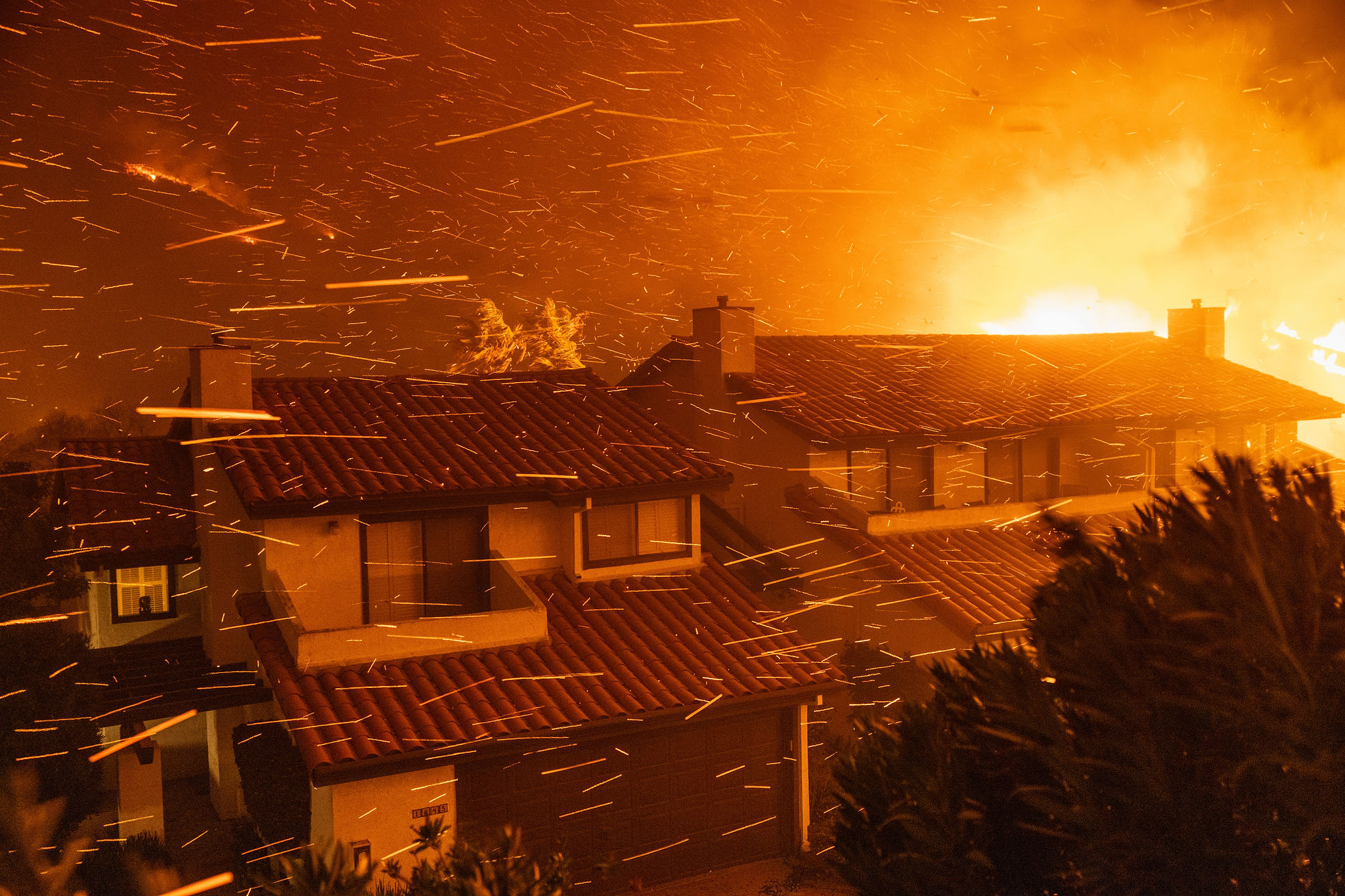


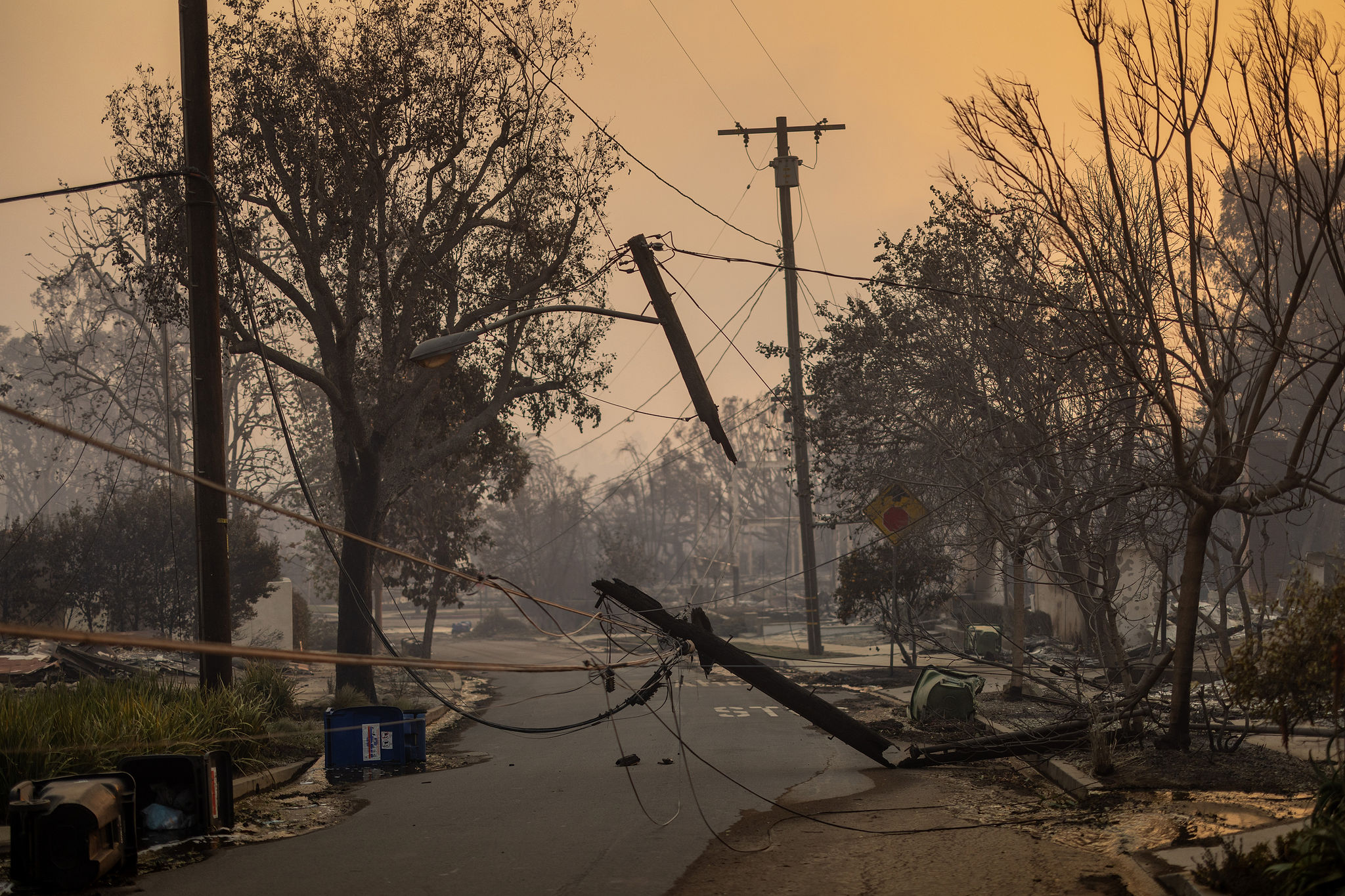
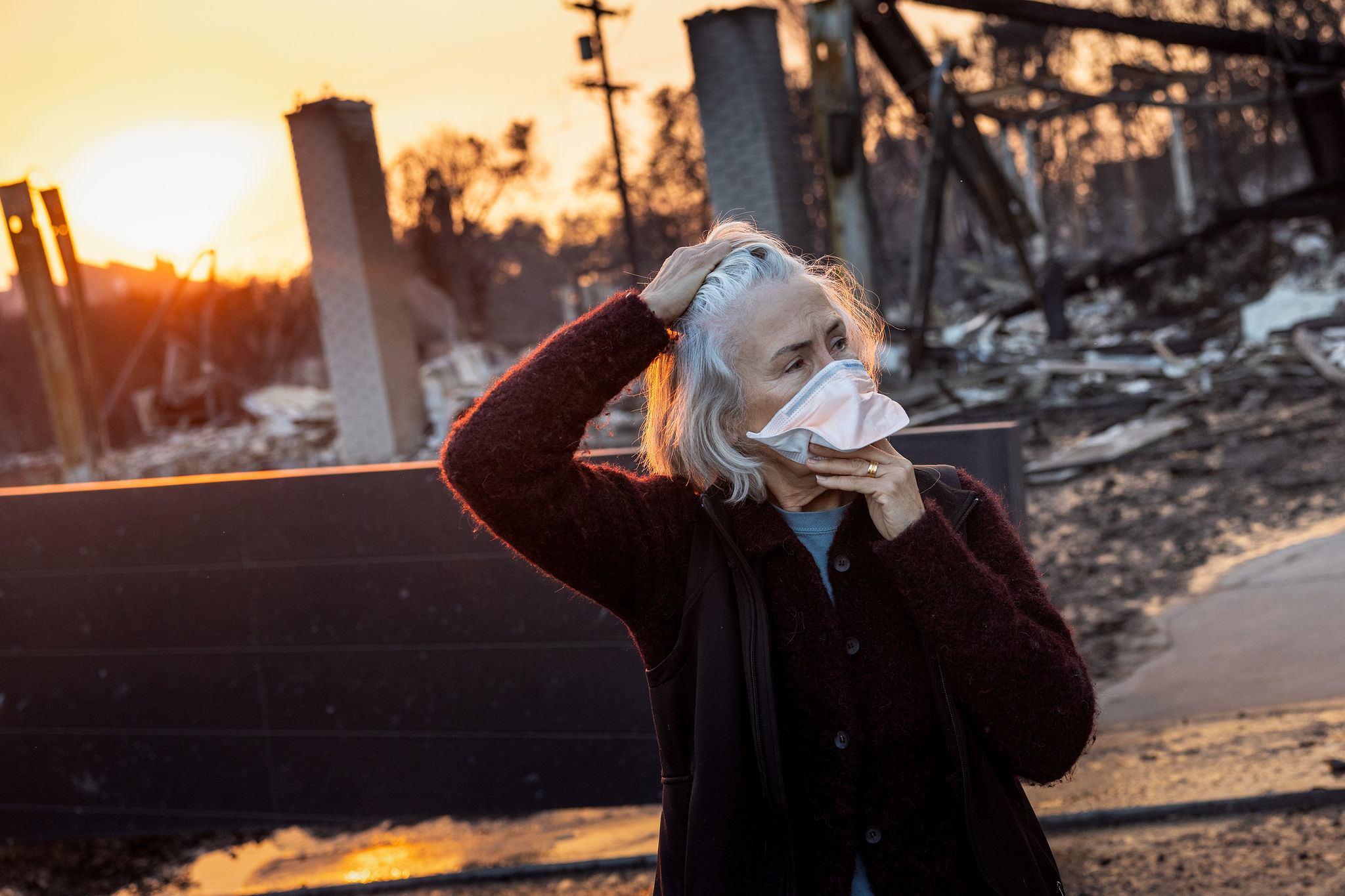
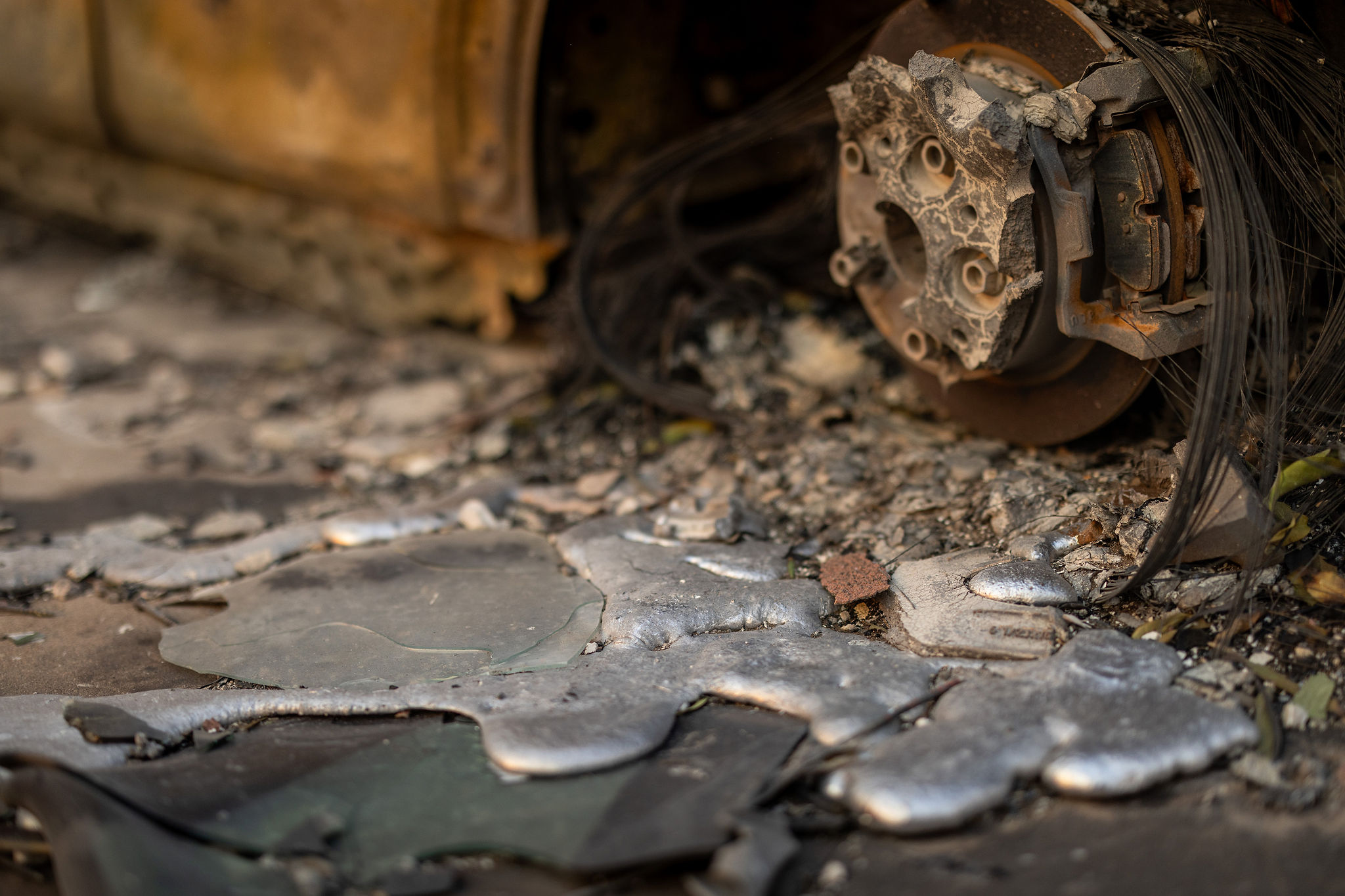
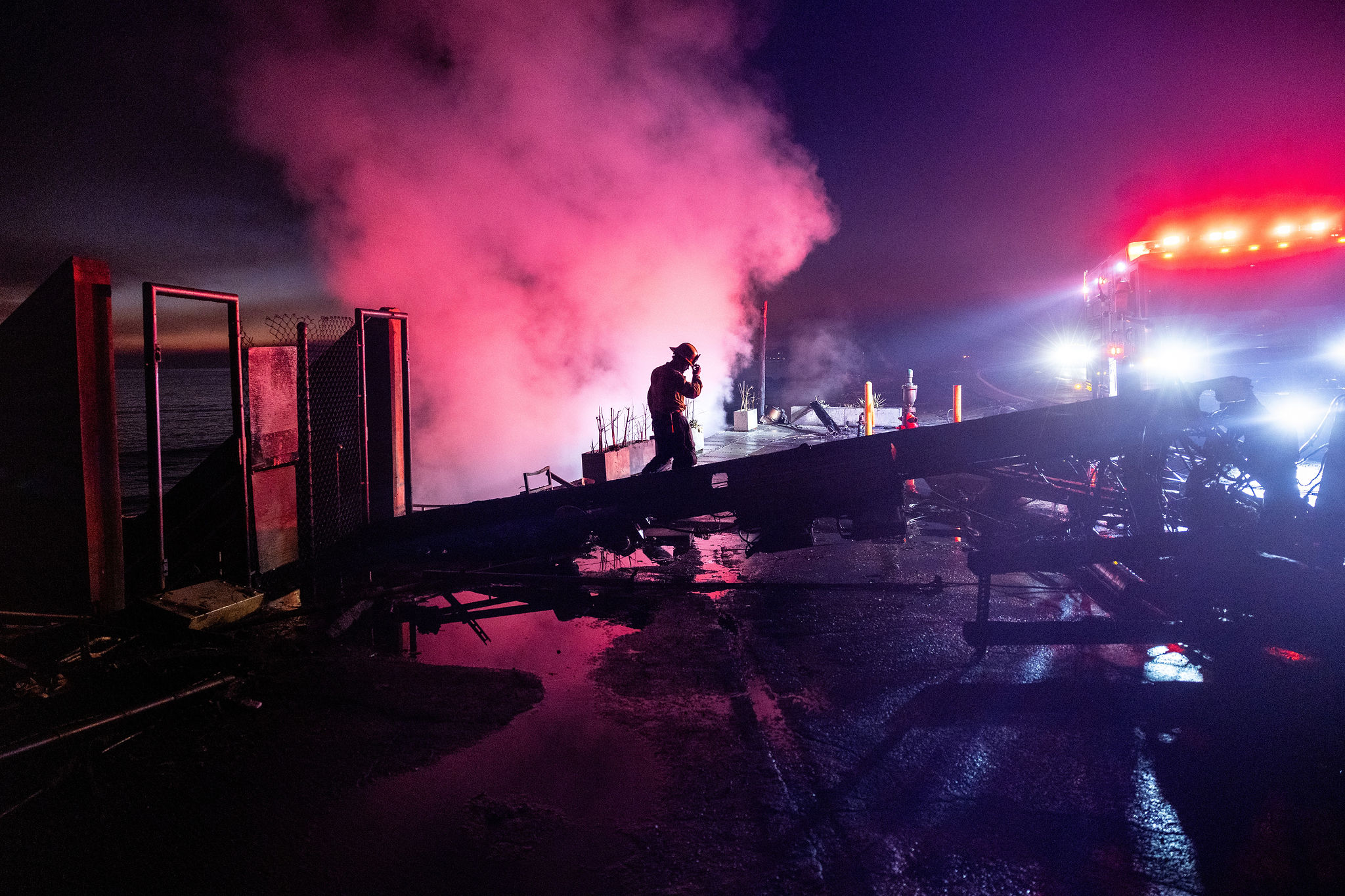
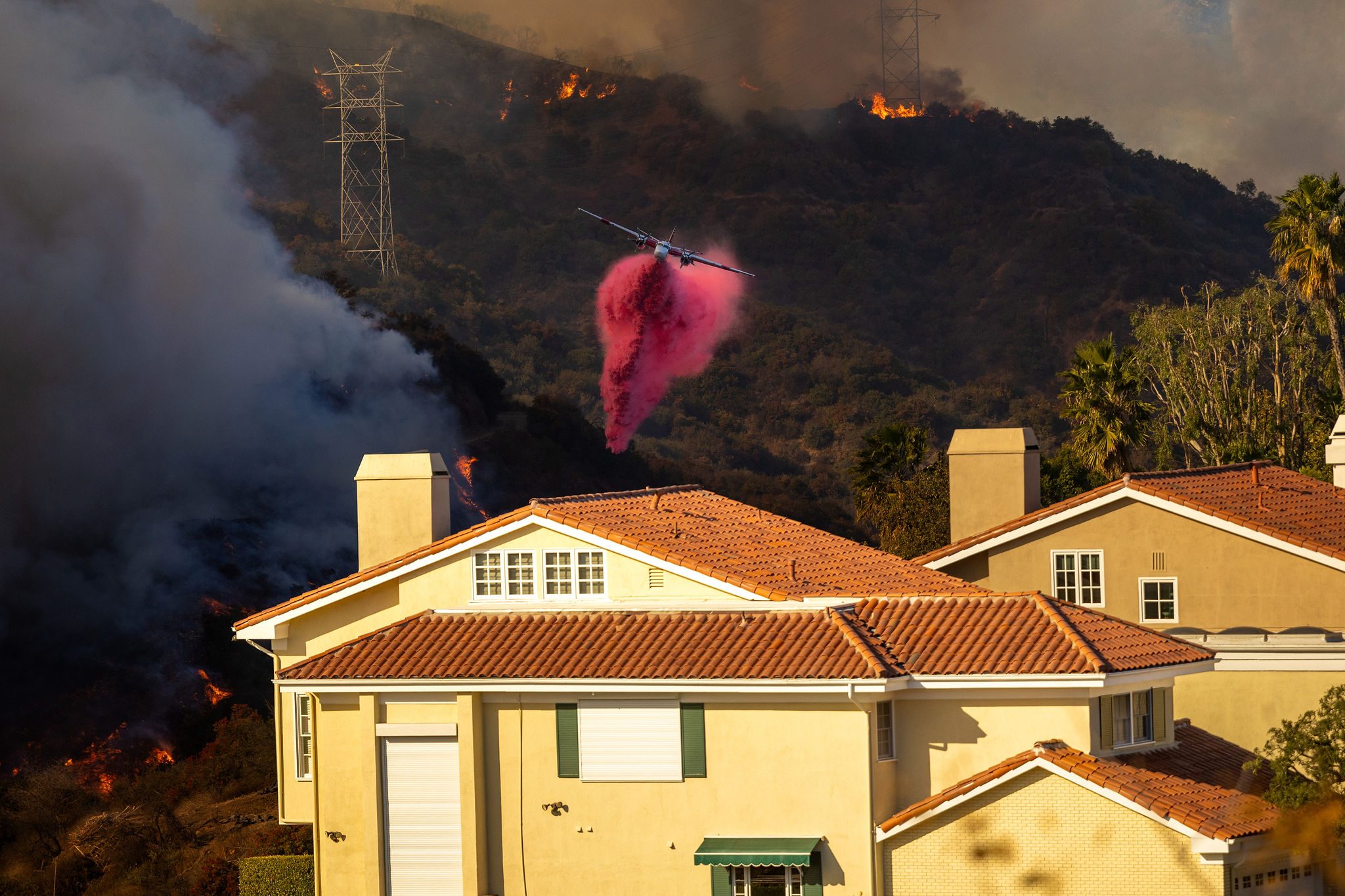
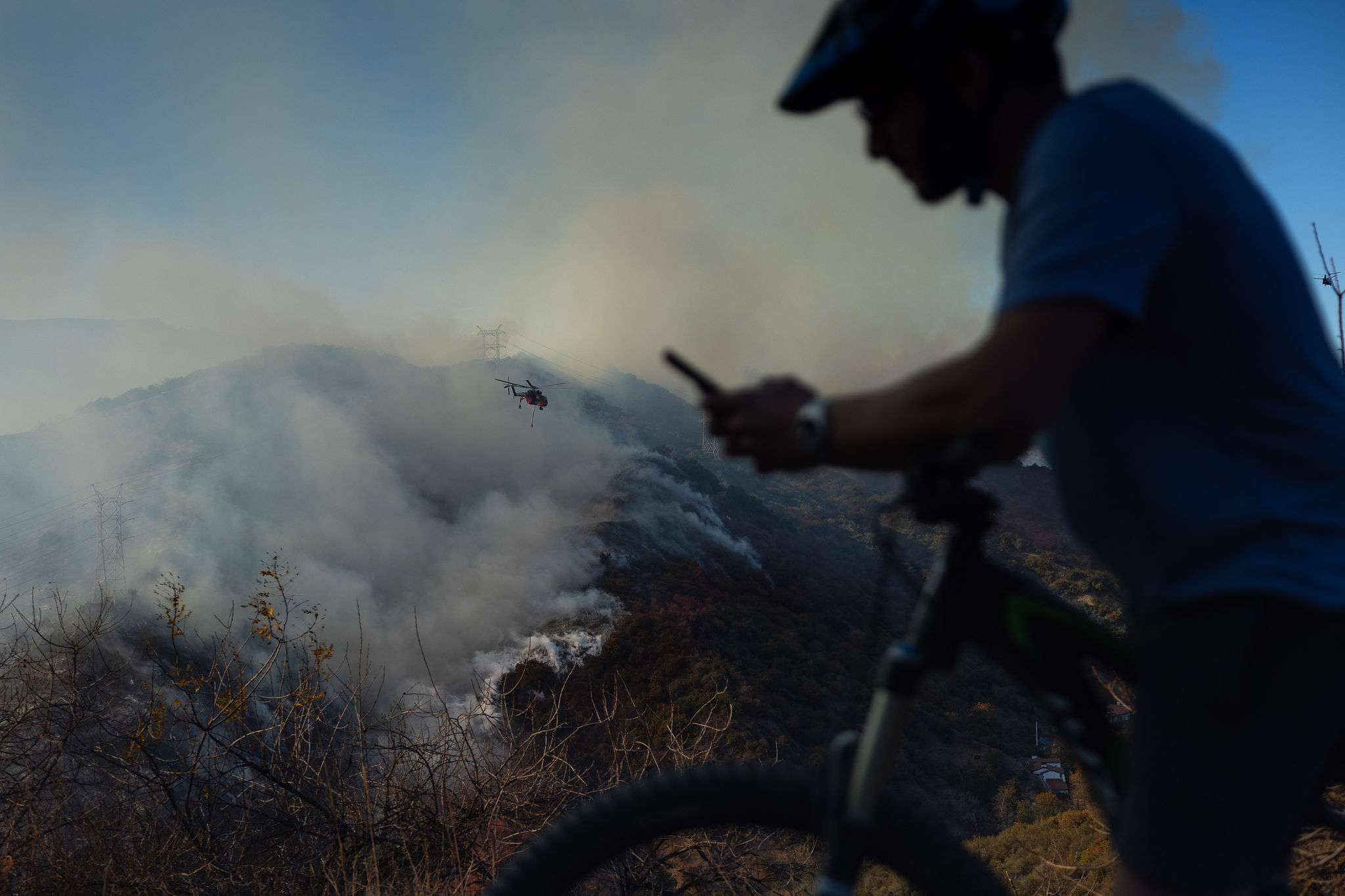
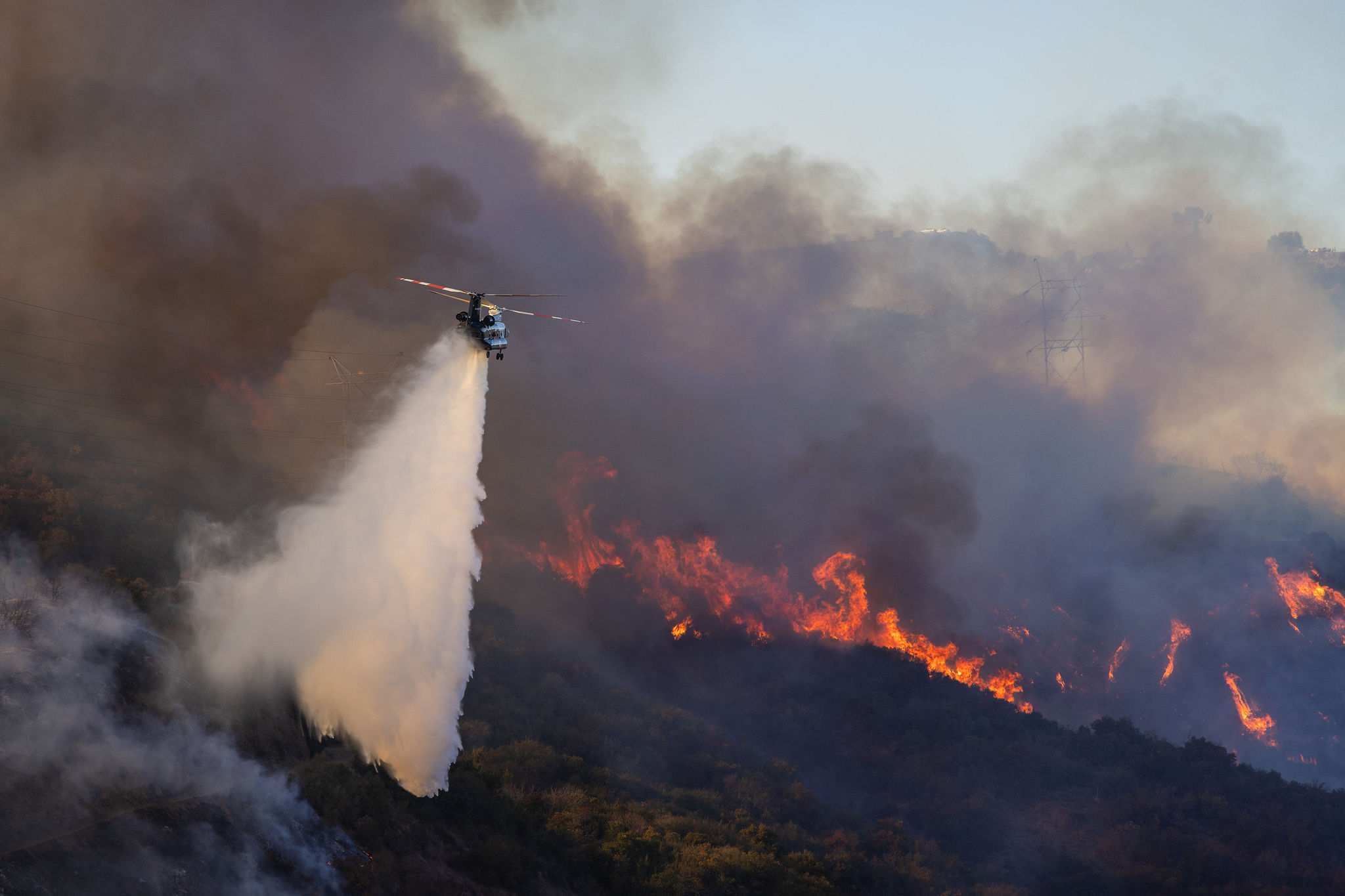
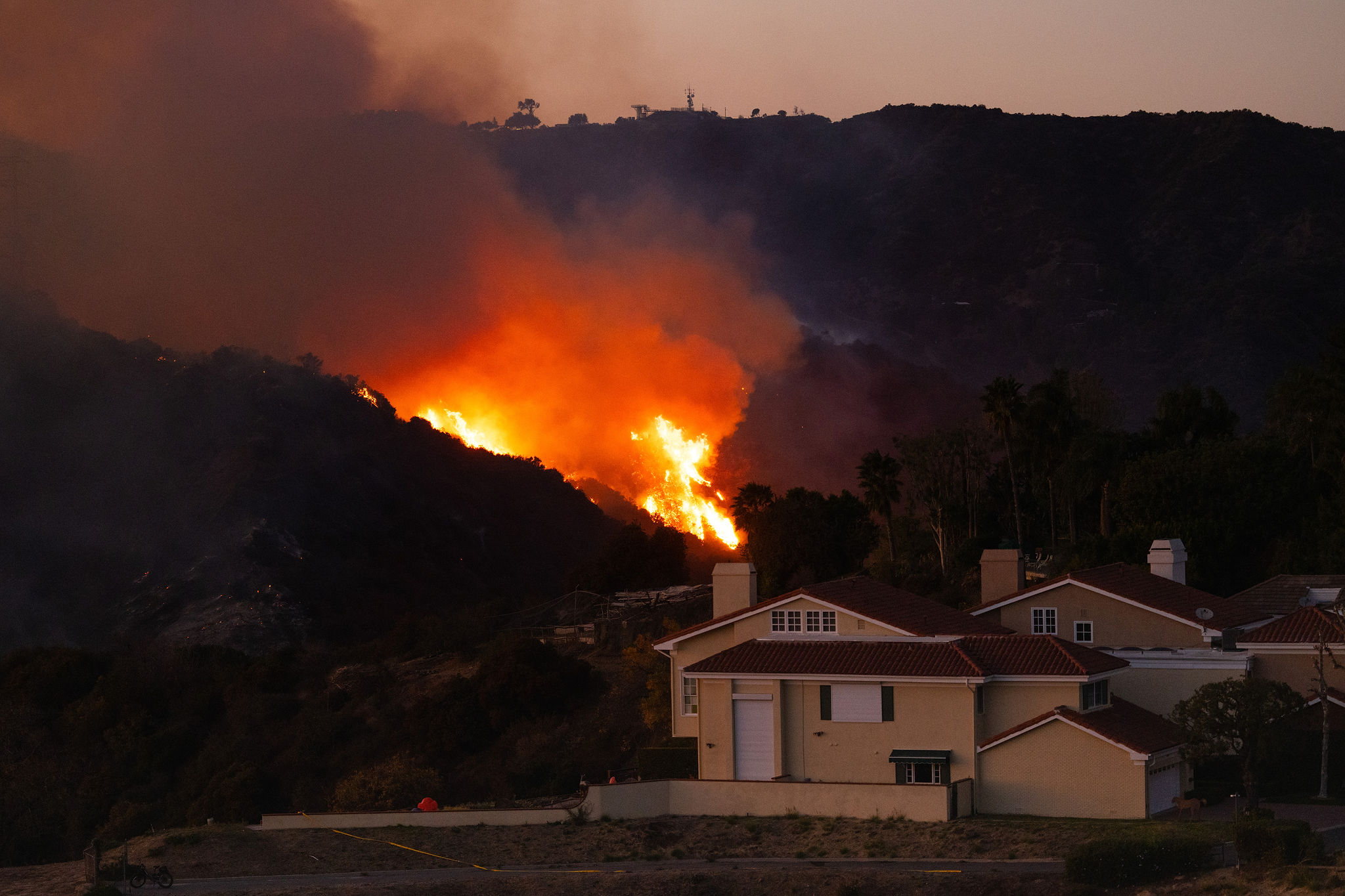
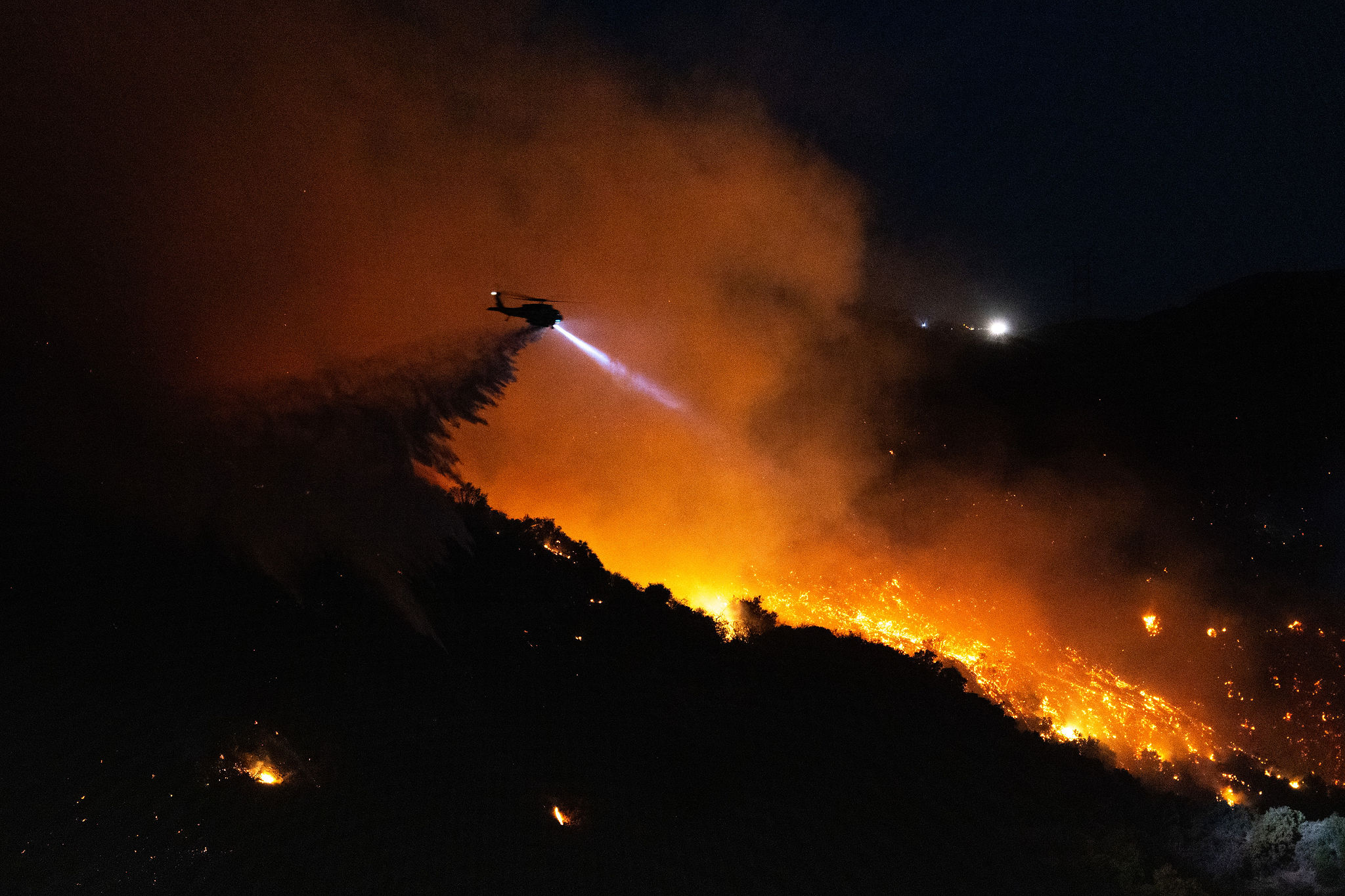
PACIFIC PALISADES, CALIFORNIA: Cars left behind in driveways following evacuation.
Jay L. Clendenin
Since leaving the Los Angeles Times, Jay Clendenin has primarily been photographing corporate and commercial projects, mostly in the entertainment world where he spent the majority of his 16 years at the LAT.
“When doing editorial work, I’ve started distributing my news and enterprise images through Getty Images and entertainment work through Shutterstock – all that got turned on its head last week with the merger of these two companies.”
We caught up about his experience covering the LA fires.
Heidi: Please share your thoughts on citizen journalists and what they need to consider.
Jay: The term “citizen journalist” makes me cringe. I am very aware of human behavior and the desire to “know” and “report” what’s happening (in particular when it’s their neighborhood). But there are a couple of significant distinctions between said “man-on-the-street” spreading a “story” and a trained Journalist (capital J) reporting: ethics and facts. It’s true that the Rodney King video (dating myself) was “citizen journalism” and was incredibly impactful on society – unfortunately, not enough to convict?! Where as today, I’m seeing people abusing the homeless with humiliating videos of their circumstances, all in the name of “citizen journalism.” And with the fires, people are sharing wild accusations/aspersions about the number of fire personnel, water supplies, and who happened to be on vacation when the fires broke out. No investigating for facts, just hitting “share” and adding “this has to stop,” as if the things said were facts vetted by credentialed journalists.
You were a staff photographer for the Los Angeles Times where editorial integrity was essential. How have things changed when stories go unchecked or lack empathy for the crisis?
Being a trained, experienced Journalist as part of a major news organization comes with great responsibility. We try for multiple sources, probe officials for more info, and try to be on the ground to see things first-hand. It is also important to vet people we talk to. During the Palisades fire, after a couple of questions to some people on e-bikes, I realized they did NOT live in the neighborhood, and I said they shouldn’t be riding around amongst the ruins. If they didn’t have bad intentions, they could easily have been accused of it. And thankfully, there are curfews now and they’re making arrests.
LA Magazine and Wired were recently called out for posting illegal drone footage – how has the increase in social media and scooping news impacted traditional media gathering practices?
Drones are an incredible tool that can add a very visceral, immersive effect to story telling. I’ve embraced it, even got my Part 107 license. Part of getting a license and being “legal” is following FAA regulations and local laws. During major disasters, especially fires, a Temporary Flight Restriction (TFR) often goes out, to keep the skies clear for fire and safety aircraft. You don’t fly your drone. Period. When these media outlets choose to run these very “clickable” videos acquired illegally, they encourage the behavior. And for the “haters” on social who love saying “you’re just jealous you didn’t think of it first!” Let me tell you, all of us licensed operators, are VERY aware of the visual impact of these scenes and have interest in capturing the scene with our drone, but we KNOW the safety considerations and are very conscious of the illegal behavior by un-licensed “content creators” and hobbyists.
Explain the danger of flying drones during an active fire of this magnitude while a Temporary Flight Restriction (TFR) is in place.
The near-worst-case-scenario of flying a drone during a TFR happened during the Palisades fire, when a fire righting aircraft hit a drone, damaging the aircraft and knocking it out of commission. Someone’s greater interest in clicks, lead to interrupted fire-fighting capabilities during this horrific disaster. I can’t imagine the anger of homeowners who see that story while they’re praying all the efforts can save their home and community. Losing the air attack is huge. I was at the top of Mandeville Canyon last night (Saturday) and the fire retardant and water drops did the majority of flame suppression, slowing the growth on the eastern flank. Further update on drone activity and arrests can be read about here. “California authorities say there have been at least 40 incidents in which unauthorized drones have forced firefighting aircraft to pause operations, putting more lives at risk as the fires continue to spread and firefighters on the ground are left without air support.“
What safety considerations have you taken while covering the fires?
I have a fire brush jacket and pants, helmet and goggles. I use n-95 masks, conveniently on-hand after Covid! I don’t have “fire” boots, but wear my Blundstones and try to avoid walking on smoldering piles – they aren’t rated for that high a heat. I also work to only wear cotton items, which is hard these days, as so much of my wardrobe has become nylon/synthetic fibers. Synthetics are much quicker to ignite and I’d rather decrease the chances of melting clothes on my body.
Are you part of a photo collective during a local crisis?
I’m not part of a formal collective, but stay in contact with many photojournalists on assignments, who tend to have more resources available to them. Again, with big events, experienced PhotoJournalists know the ropes and safety is a priority. I’ll ask for best routes to enter areas, etc. It’s also great for hearing about spots that are super sketchy or not easily accessible without additional gear, like a 4×4 vehicle.
How did you get your start in photojournalism?
I started in photojournalism at L.A. Pierce College, running on several fires in the L.A. region in the early 90’s. We had our college paper as an outlet/publication, but also were able to get the Daily News to let us process and print our film, occasionally publish, and always give us replacement roles of film. We weren’t fully-vetted journalists yet, we were training to be. So we were still more reliable than a “citizen journalist.” I don’t want to prevent accurate reporting from being done, but someone who has a big TikTok following, does NOT a journalist make. Reach out to real Journalists, see how they report, what questions they ask. And please stop with the video Supercuts of people’s property burning and using gimble spins, even if you actually did it “by hand” and brag about it. 🤬
The Art of the Personal Project: Amanda Lopez
The Art of the Personal Project is a crucial element to let potential buyers see how you think creatively on your own. I am drawn to personal projects that have an interesting vision or that show something I have never seen before. In this thread, I’ll include a link to each personal project with the artist statement so you can see more of the project. Please note: This thread is not affiliated with any company; I’m just featuring projects that I find. Please DO NOT send me your work. I do not take submissions.
Today’s featured artist: Amanda Lopez
Featured in NPR The Picture Show / Pablo Valdivia
Photographer pays homage to Our Lady of Guadalupe and reclaims her connection with the divine
It’s not uncommon to see an image of Our Lady of Guadalupe on murals, candles, statues and even clothing. She’s a significant religious figure who signifies hope and protection for countless Latinos in the U.S. and abroad.
For photographer Amanda Lopez, her image goes beyond religion, serving as a powerful emblem of home.
Catholics believe that, in 1531, the Virgin Mary appeared before Saint Juan Diego Cuauhtlatoatzin, an Indigenous farmer at the Hill of Tepeyac in a suburb of Mexico City. According to the story, she left on his cloak an image of a brown-skinned Virgen de Guadalupe, which still hangs at the Basilica of Our Lady of Guadalupe in Mexico City.
This would also be where Lopez began her own years-long journey documenting her image for Guadalupe, a project that pays homage to the “divine feminine energy, sacredness, and healing that Guadalupe’s imagery can encapsulate for people of all genders and backgrounds.
” In it, Lopez reimagines Guadalupe in a contemporary context.
During a college trip to Mexico City, Lopez visited the basilica and was moved by the sacredness of the moment. She photographed a floral “set” on the grounds, and it became an image that stayed with her for years to come. However, like many Mexican Americans, this wasn’t exactly her first encounter with the Patroness of Mexico.
Growing up as a first- and second-generation Mexican American in California’s capital, Guadalupe was a deeply ingrained part of her daily life. She attended a church named Our Lady of Guadalupe up to her teenage years and was surrounded by Guadalupe’s image in her childhood home. Her family’s Catholic values initially shaped her own, though she began to question them as this project took shape.
“The question that I kept asking myself when I was working on this project was, ‘What does it mean to be a good woman — a Mexican woman, a former Catholic woman, a good woman — in my grandmother’s eyes?’ ” Lopez said. “You have to be humble, respectful and quiet. You go along with the status quo. And then I was really uncomfortable with that idea.”
Lopez then began to deconstruct that line of thinking and began to visualize how she could portray these conflicting thoughts photographically. “And that’s when I started to reimagine what Guadalupe might look like and understand that to be a ‘good woman,’ you don’t have to be any of those things.”
Lopez deliberately excluded adjectives commonly used to describe Guadalupe such as “Lady,” “Virgen” or “Madre” when naming the series.
“I wanted to move beyond traditional notions about womanhood and let viewers create their own meanings. I went through my own unlearning by questioning those same terms and, in that process, was able to reconnect with her.”
For Lopez, Guadalupe signifies all that is good and loving. And her definition of what “good” meant transcended a religious context as she delved deeper in her relationship with her.
“She’s all encompassing — what is nurturing and what is caring. For me, that’s not an exclusively religious thing. She’s evolved to this symbol that actually reminds me so much of my own grandma.”
Lopez grew up seeing her grandma Isabel — also known as Nana — on a daily basis. Guadalupe was a religious presence who guided Isabel through a life filled with many highs and some heavy lows. And though Lopez has a different relationship with the patron saint than her Nana ever did, she wanted to honor everyone’s individual journey with Guadalupe.
“I know so many people who have this connection to her [Guadalupe] that are not Mexican, that are not straight, that are not women and that are not religious … And so when I was making these photos, I wanted to have the opportunity to chat with folks and ask, ‘What is it about her image that you resonate with?’ ”
For some, she’s a religious icon. For others, a cultural figure. Many are also simply captivated by the beauty of her art. For Amanda, she represents the connective thread that unites us.
In 2021, the Smithsonian National Museum of American History added 15 of these photographs to their Photographic History Collection. Now, they are being exhibited in Sacramento, Calif., the city where Lopez first connected with Guadalupe.
“It’s a little bittersweet because my grandma won’t be there,” she said. Isabel died in 2020 at the age of 91 and was buried with her favorite Virgen de Guadalupe necklace. “But she’ll be there in spirit.”
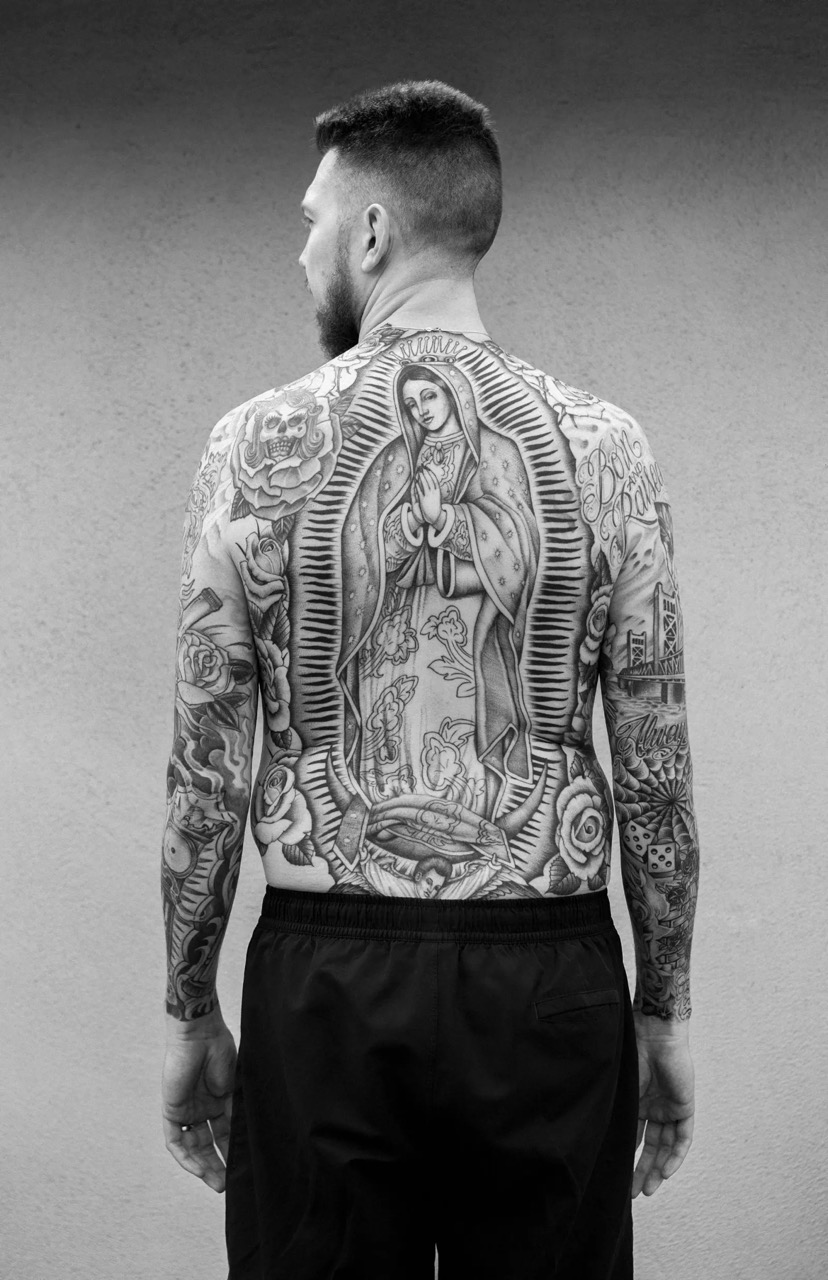
Tyler Wichmann shares his Our Lady of Guadalupe back tattoo, created by renowned tattoo artist Chuco Moreno.
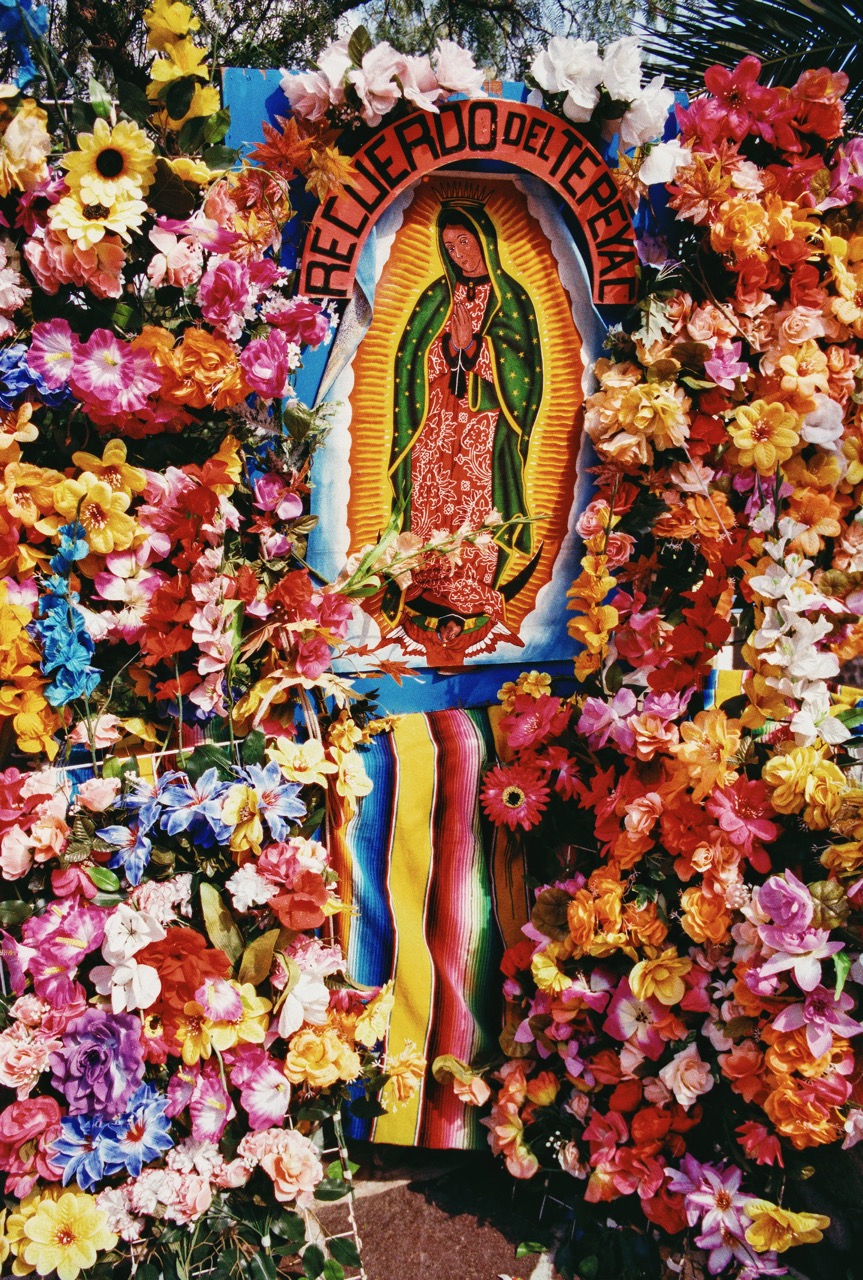
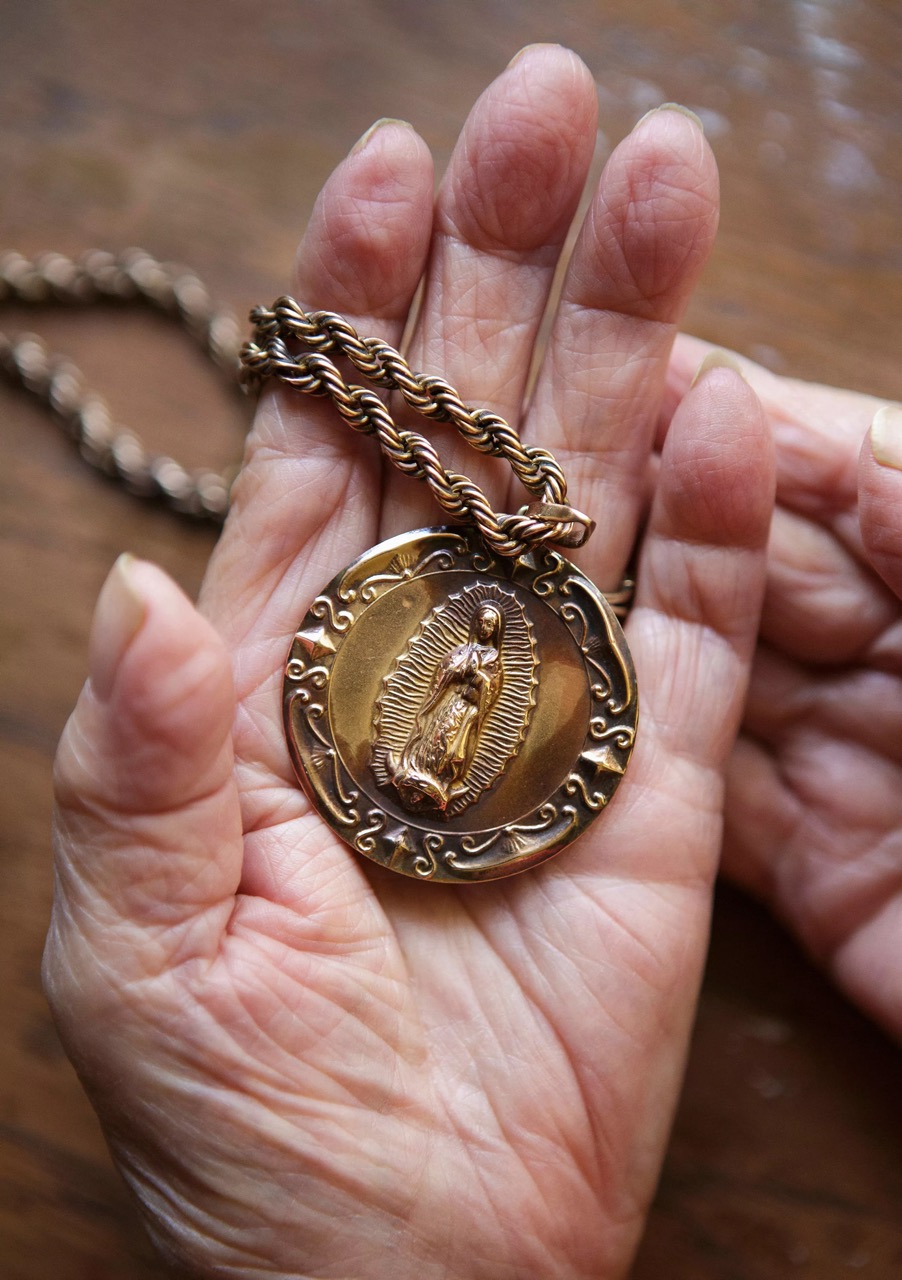
My grandmother always wore her gold Our Lady of Guadalupe necklace. I never once saw her without it.
To see more of this project, click here
To purchase Guadalupe Zine click here
APE contributor Suzanne Sease currently works as a consultant for photographers and illustrators around the world. She has been involved in the photography and illustration advertising and in-house corporate industry for decades. After establishing the art-buying department at The Martin Agency, then working for Kaplan-Thaler, Capital One, Best Buy and numerous smaller agencies and companies, she decided to be a consultant in 1999. Follow her on Instagram
The Art of the Personal Project: Tom Hussey
The Art of the Personal Project is a crucial element to let potential buyers see how you think creatively on your own. I am drawn to personal projects that have an interesting vision or that show something I have never seen before. In this thread, I’ll include a link to each personal project with the artist statement so you can see more of the project. Please note: This thread is not affiliated with any company; I’m just featuring projects that I find. Please DO NOT send me your work. I do not take submissions.
Today’s featured artist: Tom Hussey
“And to All a Good Nightcap: The 12 Cocktails of Christmas”
And to All a Good Nightcap: The 12 Cocktails of Christmas is all about capturing the heart of the holiday spirit through mixology and storytelling. Each cocktail in this series isn’t just a recipe—it’s a celebration of tradition, creativity, and the joy we share during this magical season.
With this project, I reimagined Christmas as a blend of flavors, community, and the cultural traditions that make the holidays so special. Santa himself takes the lead, narrating each drink with his signature charm and nostalgia. From the boldness of The Smoking Gun to the tropical refreshment of the Key West Mojito, each cocktail tells a story, inviting you to savor not just the taste but the moments they create.
This project wouldn’t have been possible without an incredible team. A huge thank you to Patty Hussey from The Production Party for her amazing work as producer and stylist, and played the part of Santa for the drink images. Thanks also to Ken Womack and Mike Stopper from The Agency Hack, for bringing it all together with their fantastic title and design.
For me, this project is about more than cocktails—it’s about celebrating the joy of connection, the stories we share, and the memories we create over a glass. Here’s to raising a toast to life’s most spirited moments. Cheers!
To see more of this project, click here
APE contributor Suzanne Sease currently works as a consultant for photographers and illustrators around the world. She has been involved in the photography and illustration advertising and in-house corporate industry for decades. After establishing the art-buying department at The Martin Agency, then working for Kaplan-Thaler, Capital One, Best Buy and numerous smaller agencies and companies, she decided to be a consultant in 1999. Follow her on Instagram
The Art of the Personal Project: Jason Knott
The Art of the Personal Project is a crucial element to let potential buyers see how you think creatively on your own. I am drawn to personal projects that have an interesting vision or that show something I have never seen before. In this thread, I’ll include a link to each personal project with the artist statement so you can see more of the project. Please note: This thread is not affiliated with any company; I’m just featuring projects that I find. Please DO NOT send me your work. I do not take submissions.
Today’s featured artist: Jason Knott
Beyond the Margins by Jason Knott
An inconvenient truth of life. There is a fragility. There are no guarantees.
Partnering with Catching Lives, a hardworking and underfunded group of dedicated people in Canterbury.
I was determined to offer what help I could to highlight the current growing crisis we are facing of Homelessness on our streets. After many weeks of gaining the trust of a few of their ‘clients’ I have been fortunate enough to be invited into their world to produce a set of poignant portraits. Shock, sadness and at times anger do not begin to describe how fragile our lives are and how quickly things can take a turn for the worse. The project sets out to document the journey of those I met revisiting the places where they slept rough on the streets and in many cases after a long personal battle, before finding their new homes.
The biggest thing I learned though shooting this project is how fragile we all are as humans. For those who find themselves suddenly displaced in society — we all have a duty of care.
To see more of this project, click here
APE contributor Suzanne Sease currently works as a consultant for photographers and illustrators around the world. She has been involved in the photography and illustration advertising and in-house corporate industry for decades. After establishing the art-buying department at The Martin Agency, then working for Kaplan-Thaler, Capital One, Best Buy and numerous smaller agencies and companies, she decided to be a consultant in 1999. Follow her on Instagram
A New Winter – Sofía Jaramillo
A New Winter – Sofía Jaramillo
Heidi: What are your hopes for this body of work?
Sofia: This is an ongoing project. I hope to make a book eventually!
This project has two main goals:
- To encourage conversations about diversity and inclusion in winter sports
- To create representation for people of color in winter sports culture.
I plan to showcase this work at various museums and galleries, particularly in the Mountain West, to promote dialogue about the evolving culture of winter sports and explore ways to make it more welcoming for everyone.
How did this project come about?
This project began years ago when I walked through the Sun Valley Lodge. Sun Valley is the first ski destination resort in the U.S., meaning it has some of the earliest marketing images of destination skiing in the country. These were the first images to define what ski culture would be like in the United States. Many of these photographs are displayed in the lodge, particularly in an iconic hallway lined with hundreds of images.
While I was there, I noticed that out of the hundreds of images on the walls, only one featured a person of color. This stark observation made me reflect on the correlation between the representation of individuals in those historic images and what we see, on average, at ski slopes today. For those who don’t ski or haven’t spent much time on ski hills in the U.S., according to the Snow Sports Industry of America’s 2022-2023 annual report, only 13% of all skiers were Hispanic, 9% were Black, and 8% were Asian, making skiing one of the least diverse sports.
When I saw those images, I thought, “How does this relate to who we see skiing today, and how exciting would it be to remake and reimagine ski history in a more inclusive way?” As a young Latina who grew up in Sun Valley, this project reflects my personal journey with identity and my desire to see a future in winter sports culture where everyone feels they belong.
How did you decide on the casting?
The first year of casting, I called up all my friends to see who might want to support and be part of my crazy idea. I am lucky that some of my good friends are also great models and we got a really great group together for the first year this way. I invited everyone out to Sun Valley and we shot for 3 days.
The second year was way different. We started planning casting a lot further in advance and we worked with a dedicated Casting Director. Terumi Alana Murao, who is also our stylist, stepped it up and offered to do the casting as well. Turns out Terumi is just as talented at styling as she is casting and we were able to lock in some incredible models!
We are specifically seeking athletes and models who are not only outstanding in their fields but also share our project’s mission of representation and inclusion in outdoor sports. Many of the models we have chosen are involved in either operating or volunteering with nonprofits and organizations that promote participation in outdoor sports among people of color. Quannah ChasingHorse and her family started Native Youth Outdoors, which provides access to the slopes for Native Youth in Alaska. Juju Milay started Colour the Trails, a nation wide organization in Canada that helps get folks of color outdoors in many different sports.
How did you decide on which images to reimagine?
I spent about a year researching images and looked at different sources from library archives and books, to online archives.
My main source was actually the Wood River Historical Museum in Sun Valley. I spent hours going through old slides with an archivist looking at images and browsing their online archive. The historic images absolutely fascinate me! Many of the images that caught my eye were shot by Union Pacific Railroad photographers. The railroad started Sun Valley Resort and had their own photographers. Beyond those photos, I was drawn to the works of other photographers like Slim Aarons, George Silk and Ray Atkeson for their minimalistic style and ability to showcase the pure joy and pleasure of ski culture.
Historically, Black and Brown bodies have rarely been depicted in moments of joy, pleasure, and strength in photography. Instead, the images that dominate history often reflect narratives rooted in struggle or oppression. This absence speaks volumes and it’s one I seek to challenge with my work. In this photo series, I juxtapose Black and Brown bodies with spaces and scenes they have not traditionally been depicted in, such as the world of skiing and luxury. Slim Aarons’ work, for instance, often celebrated exclusivity and affluence, aligning closely with the early imagery of skiing in the U.S. By placing BIPOC+ individuals in these contexts—where their presence has historically been erased or marginalized—I want to reimagine these spaces and expand our understanding of who belongs in them.


How can people support the project?
If brands or agencies would like to support this project, they can either hire me for similar concepts or donate vintage clothing for the shoots. Anyone can contribute directly to the project by donating to the Sun Valley Museum of Art and specifying that the donation is for “A New Winter”. Supporters can also purchase fine art pieces through Ochi Gallery, where we offer a variety of sizes and price points. If you know a book publisher who might be interested, please connect me with them. Additionally, I am available to speak at your event! I have a 20-minute keynote presentation on the history of skiing and this project.
Can you share a little bit about the process from the first photo to creating the last photo?
This was quite a journey for us. In the first year, our goal was to prove we could even just make this happen with a dedicated team of eight people. We learned a lot, starting with five scenes that were all single portraits.
By the second year, we shot eight scenes, including three group shots. We went from having a small crew the first year to having over 30 people on set on year two for some of the scenes. During the second year we were way more set up because I had built community connections in Sun Valley like private supporters and the Sun Valley Resort that was a huge supporter of this project. They ran lifts for us even after they were closed, helped us dig snow pits and gave us lift access. One of the most unexpected parts of this project, was how much the community in Sun Valley showed up to support it and make it happen. I plan to continue it in the snow sports realm and beyond, and I’m excited to see how it evolves after being showcased at the museum and gallery this winter.
We sat together at Center in Santa Fe for The Democratic Lens: Photography and Civic Engagement lecture. What kind of framing did that provide?
Yes! Getting to hear that talk was such a treat. I remember it being very informative and was so grateful that you invited me. The talk was about how photography informs who belongs and the different ways photographs currently and previously influence citizenship and who is deemed worthy of it. The talk had a significant impact on this project because it helped me realize the true purpose of my work: to question how images inform and influence notions of belonging. How do images, especially in a historical context, inform and influence who belongs? How do historical images perpetuate stereotypes?
The Art of the Personal Project: Doug Menuez
The Art of the Personal Project is a crucial element to let potential buyers see how you think creatively on your own. I am drawn to personal projects that have an interesting vision or that show something I have never seen before. In this thread, I’ll include a link to each personal project with the artist statement so you can see more of the project. Please note: This thread is not affiliated with any company; I’m just featuring projects that I find. Please DO NOT send me your work. I do not take submissions.
Today’s featured artist: Doug Menuez
In the dance between commercial obligations and personal passion, photographers often find solace and inspiration in the pursuit of personal projects. Photographer and Director Doug Menuez, having spent most of his life behind the lens and professionally shooting for decades, recently embarked on a sabbatical with his wife to Portugal. In this time, Doug has had more opportunities to shoot personal projects and get to know the country and people and has opened the door to a new chapter in his photography.
Initially living in a 500 year-old “noble” manor house in a medieval village, they recently moved to an ocean view apartment in a beach town famous for having the longest left hand break in Europe. As he immersed himself in the culture, language, and landscapes, the country revealed itself in multifaceted ways. From the lively streets of Lisbon, adorned with culture and a vibrant nightlife that attracted notable personalities like John Malkovich, to the romantic cobblestone streets of wine country, each corner of Portugal became a canvas for Doug’s lens.
What aspects of Portugal make it an exciting destination for shooting assignments?
Having become well-acquainted with the language, culture, and diverse topography of Portugal, I think it’s a great place to hold a shoot. The mainland itself offers a staggering variety, from historic cities like Porto to the picturesque countryside, mountains, and valleys. The Atlantic and Mediterranean coastline, featuring renowned surf towns and the world-famous waves of Nazare, adds another layer of charm. I am captivated by the sun-drenched beaches, villas, and villages of the Algarve coast. Each mile of the country offers something different, but it’s a relatively small country making moving to each region quite easy.
Logistically, how are you finding producing shoots in Portugal?
Since arriving in Portugal, I have reconnected with a long-time collaborator, European Producer Staffan Tranaeus, who has been based in Lisbon for the last 30 years. Staffan’s company, Southwest Productions, has an extensive track record of producing advertising shoots, broadcast productions, documentaries, and TV features across Europe and the world. Their knowledge and network make Portugal a well-wired and accessible destination for creative projects, providing photographers with a valuable resource for seamless execution and exploration
What are the greatest benefits of shooting in Portugal?
There are relatively low production costs here, especially compared to LA or New York. This includes talent, locations, scouting, and casting, making it an attractive destination for creative projects. Crews are experienced and professional, and all the latest gear is here. Plus, with an average of 300+ sunny days a year in most locations, Portugal provides a reliable and stunning backdrop for photoshoots. The country’s excellent infrastructure, pristine highways, comfortable trains and other mass transit, as well as numerous high-quality hotels, ensure smooth operations. Despite its ancient history and appearance, Portugal is a surprisingly high-tech country, way ahead of the US in many areas such as super high-speed internet. As an additional bonus, the warmth of the people makes the entire experience even more enjoyable.
To see more of this project, click here
APE contributor Suzanne Sease currently works as a consultant for photographers and illustrators around the world. She has been involved in the photography and illustration advertising and in-house corporate industry for decades. After establishing the art-buying department at The Martin Agency, then working for Kaplan-Thaler, Capital One, Best Buy and numerous smaller agencies and companies, she decided to be a consultant in 1999. Follow her on Instagram
